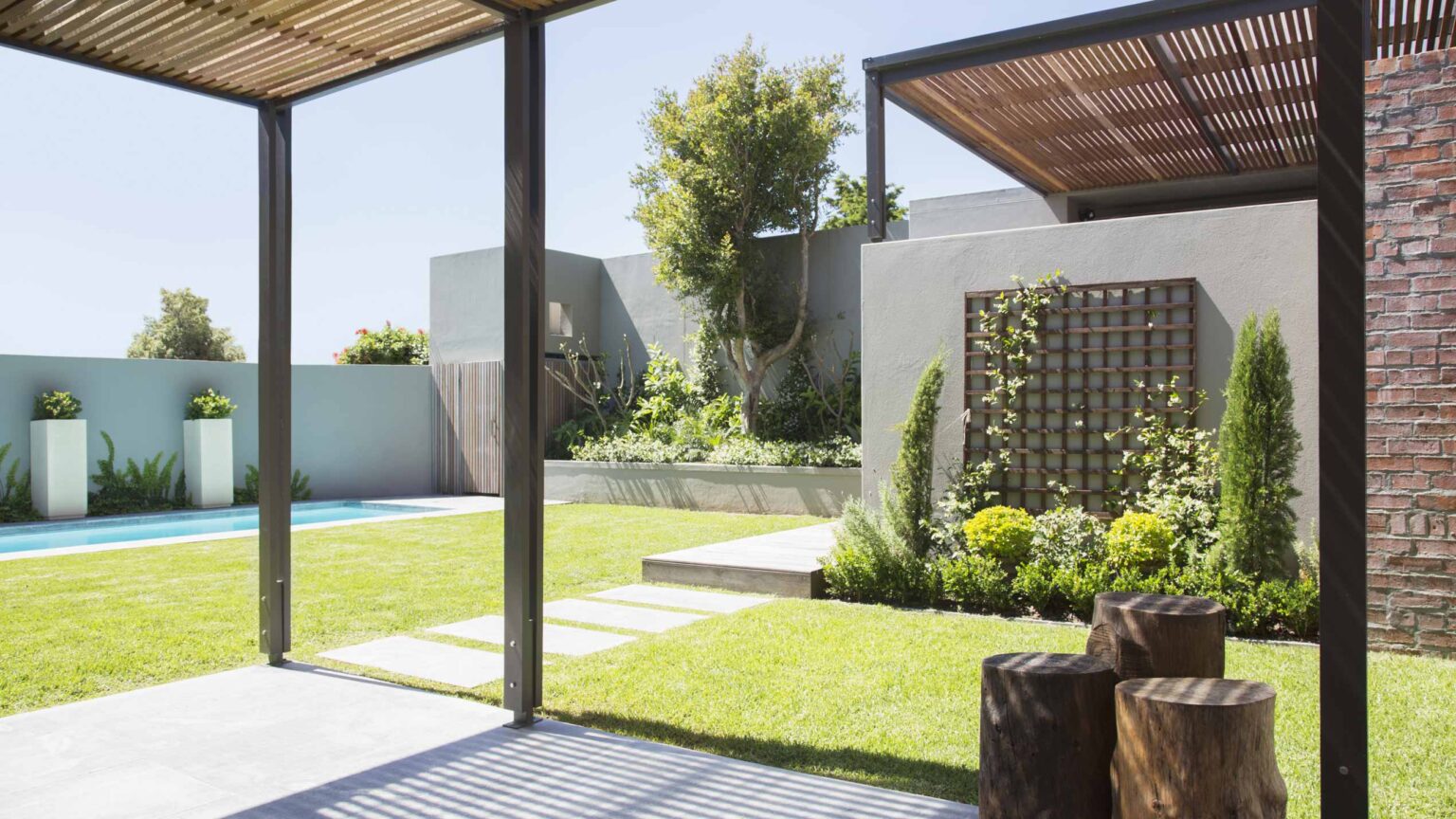
Overview
Modern garden design has evolved over time, embracing new aesthetics, technologies, and design philosophies. In this article, we will delve into the characteristics and features of modern garden design, exploring their meanings, historical origins, and design provenance, highlighting influential designers, architects, artists, and landscapers who have contributed to the development of the style.
Minimalism
Minimalist garden design is characterized by simplicity, clean lines, and a focus on essential elements. It seeks to create a sense of tranquillity and calmness through the reduction of ornamentation. The origins of minimalism in garden design can be traced back to Japanese gardens, particularly the Zen gardens of the Muromachi period (14th-16th century). These gardens, inspired by Zen Buddhism, aimed to foster contemplation and meditation. They featured sparse arrangements of rocks, gravel, and carefully pruned plants, embodying the principles of simplicity, harmony, and balance.
Minimalism, as part of western zeitgeist, emerged in the late 1950s with artists such as Agnes Martin, Donald Judd, and Frank Stella. Its origins were in modernism, but minimalism, was more focused on beauty than brutalism. The movement branched off from abstract expressionism and eschewed the conventions of fine art removing story telling and metaphors. Their work focused on simplicity, often emphasising geometric forms, white space, voids and absence, and using industrial materials to create a sleek, minimal aesthetic. The intent is to create a highly purified form of beauty.
Minimalism: Influential Designers
Musō Soseki – Japanese Zen Buddhist monk who created famous Zen gardens such as the Ryōan-ji Temple’s rock garden in Kyoto. He revolutionized the art of minimalist garden design during the 14th century. Inspired by the principles of Zen philosophy, he created serene and harmonious landscapes characterized by simplicity, balance, and the masterful use of empty space. Soseki’s profound understanding of nature and his ability to capture its essence with few elements left an indelible mark on the world of garden design, inspiring generations to seek beauty in simplicity.
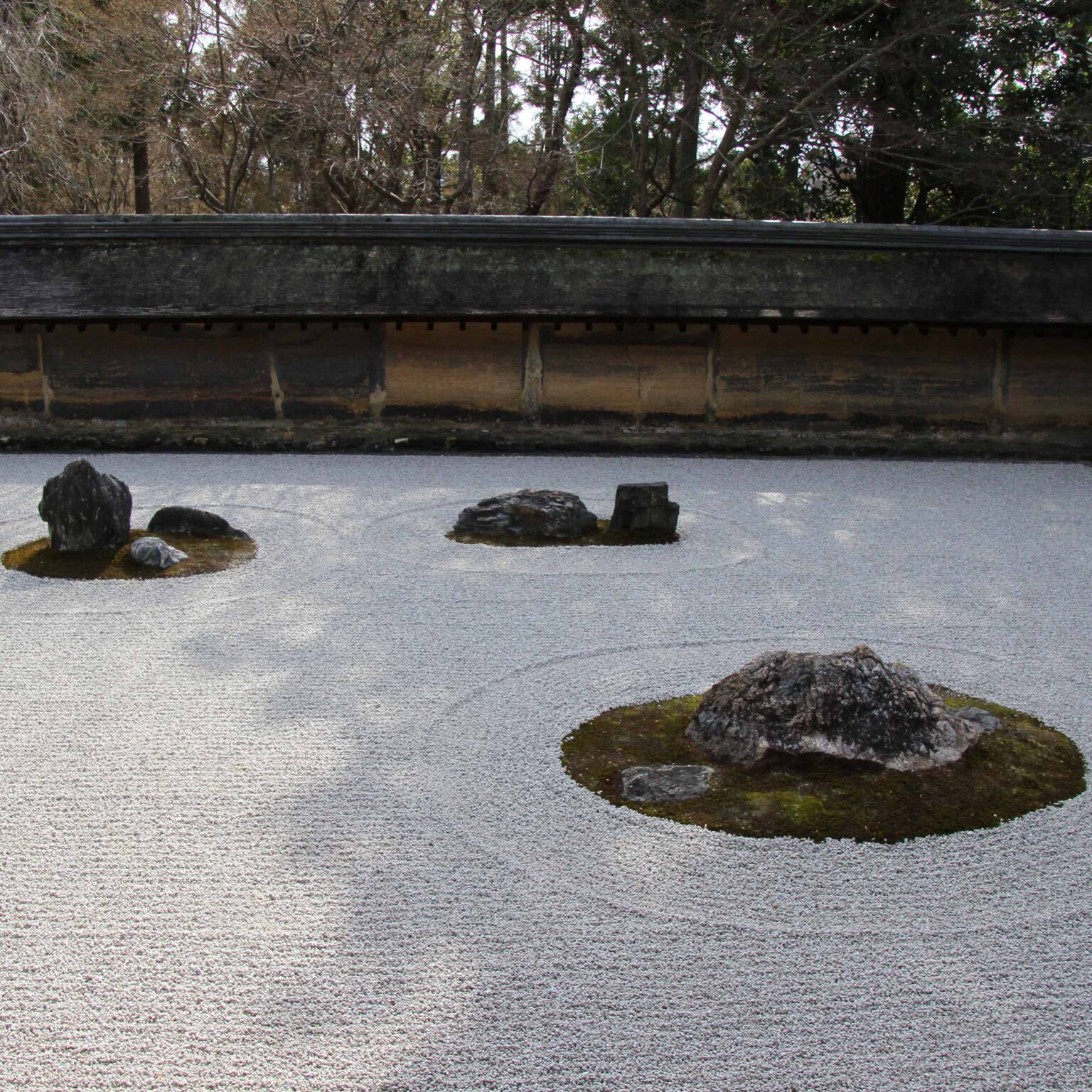
Ludwig Mies van der Rohe – German-American pioneering architect and furniture designer of the 20th century, played a significant role in the development of minimalist garden design. His visionary approach to architecture, characterized by clean lines, open spaces, and a focus on functionality, seamlessly extended to his garden designs. Mies van der Rohe’s minimalist gardens embraced simplicity, creating serene environments that merged with the surrounding architecture, exemplifying his famous maxim, “less is more.” Works includes The Barcelona Pavilion and Farnsworth House.
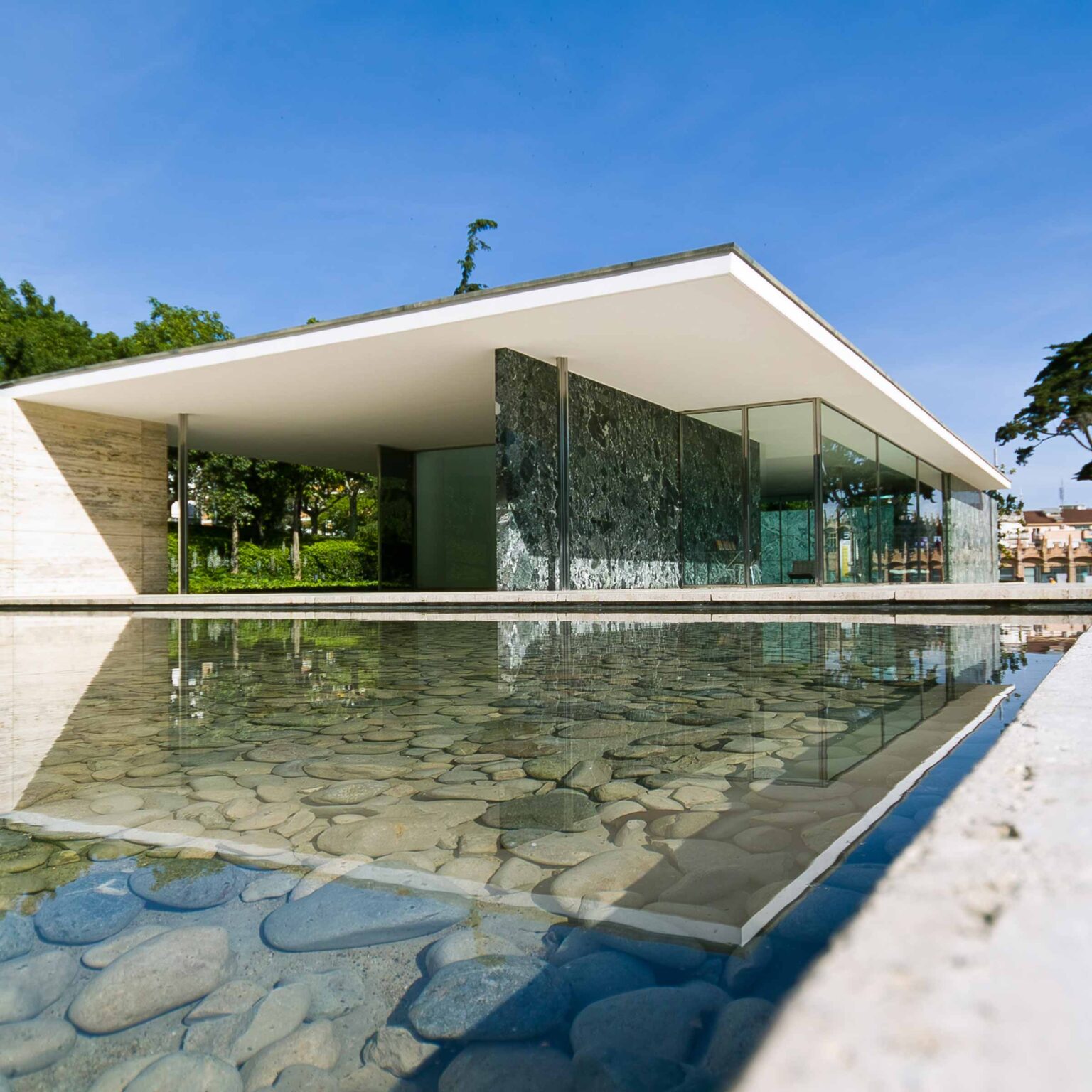
Tadao Ando – revered Japanese architect, is celebrated for his exceptional mastery of light, space, and materiality, showcased through his minimalist approach. His remarkable portfolio includes notable works such as the Row House in Sumiyoshi, the Chichu Art Museum, and the 4×4 House. Ando’s architectural genius lies in his ability to create harmonious environments where simplicity amplifies the profound impact of light, space, and materials, leaving a lasting impression on the world of design and aesthetics.
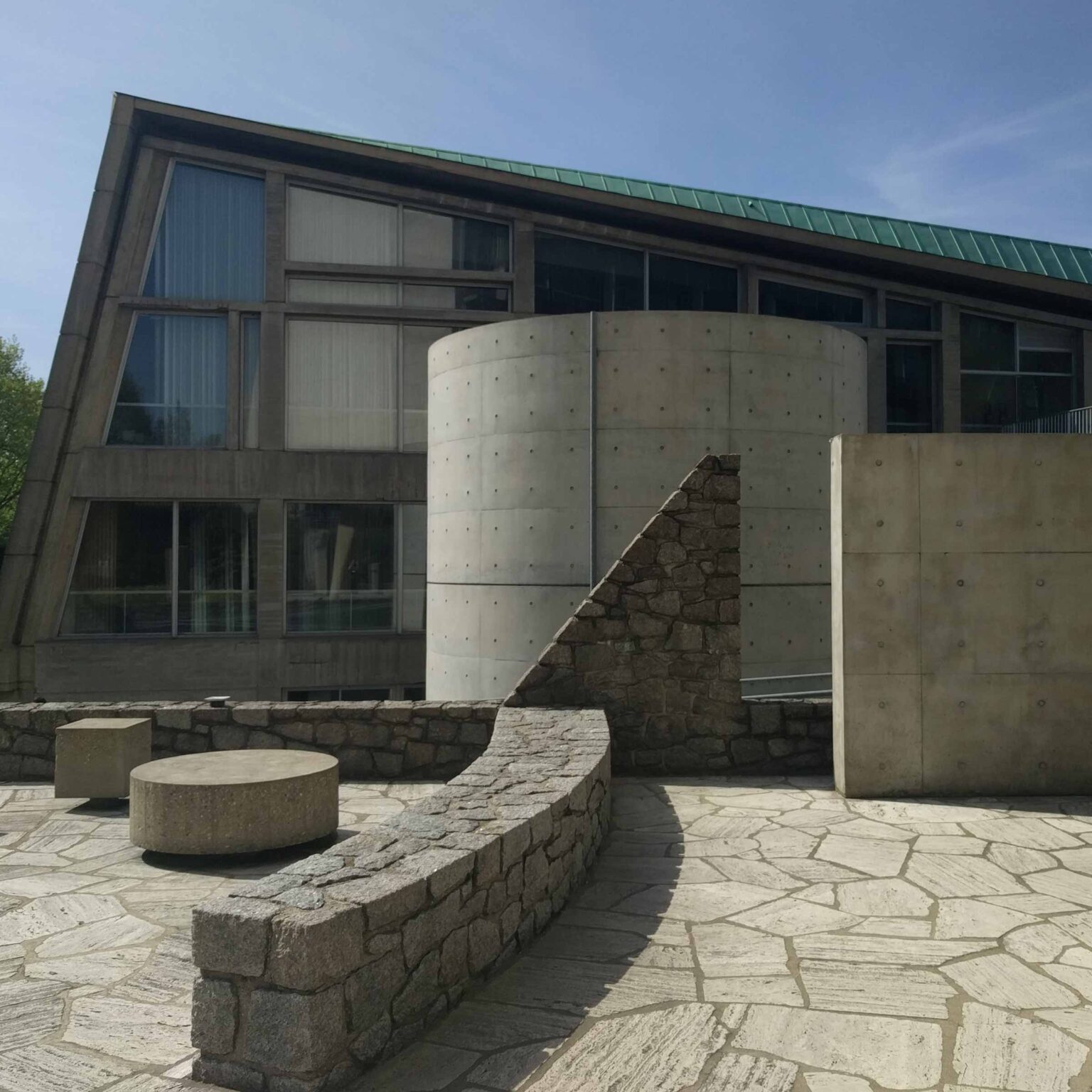
John Pawson – British architect known for his minimalist aesthetic and meticulous attention to detail. His design philosophy centres around creating serene and harmonious spaces through the use of clean lines, uncluttered forms, and a restrained colour palette. Works include Novy Dvur Monastery and Sackler Crossing Kew Gardens.
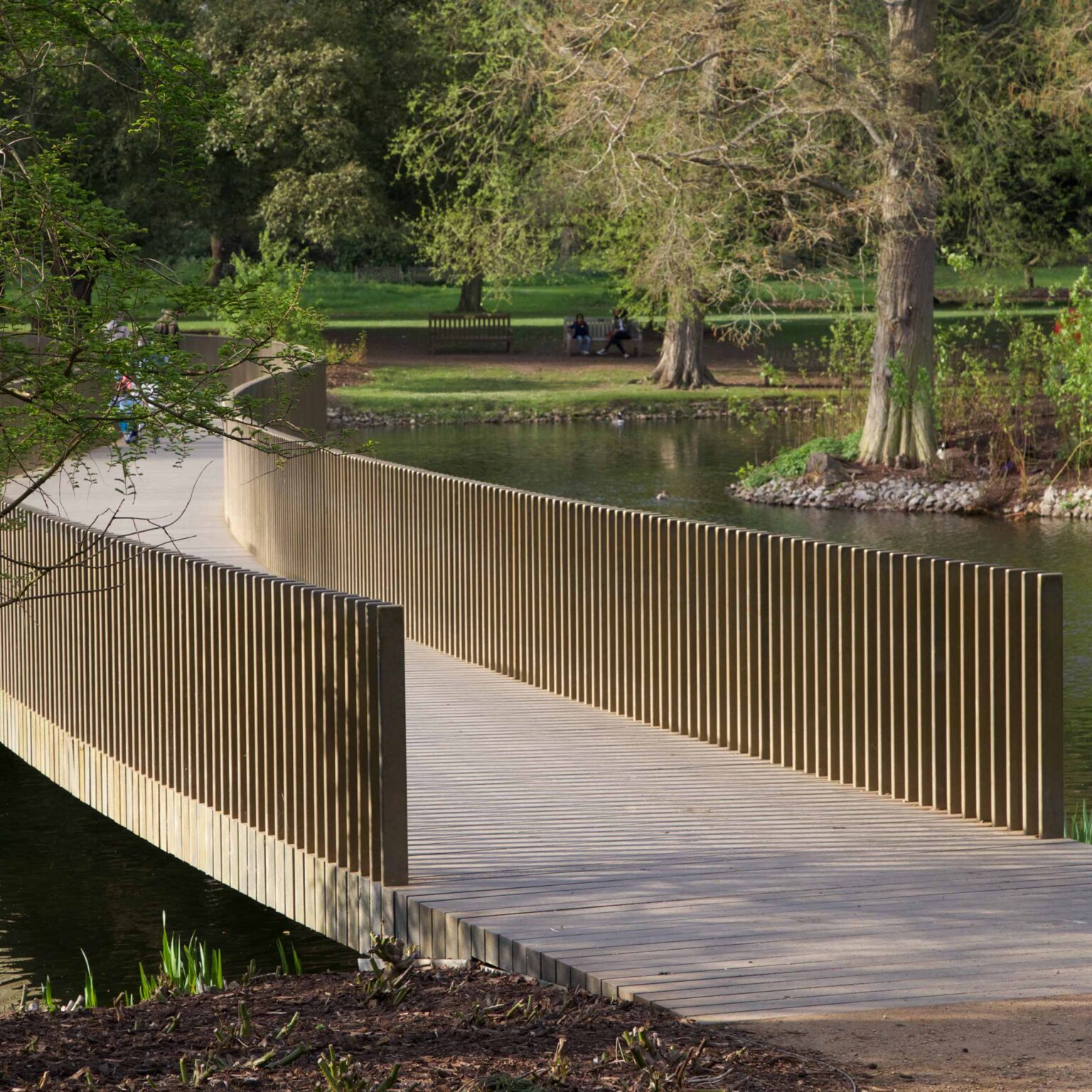
Dan Kiley – American landscape architect who embraced geometric forms, clean lines, and an emphasis on simplicity and functionality. His works often featured open spaces, carefully curated plantings, and the integration of landscape with architecture. Works include Miller House Garden in Columbus, Indiana and the United States Air Force Academy campus in Colorado Springs, Colorado.
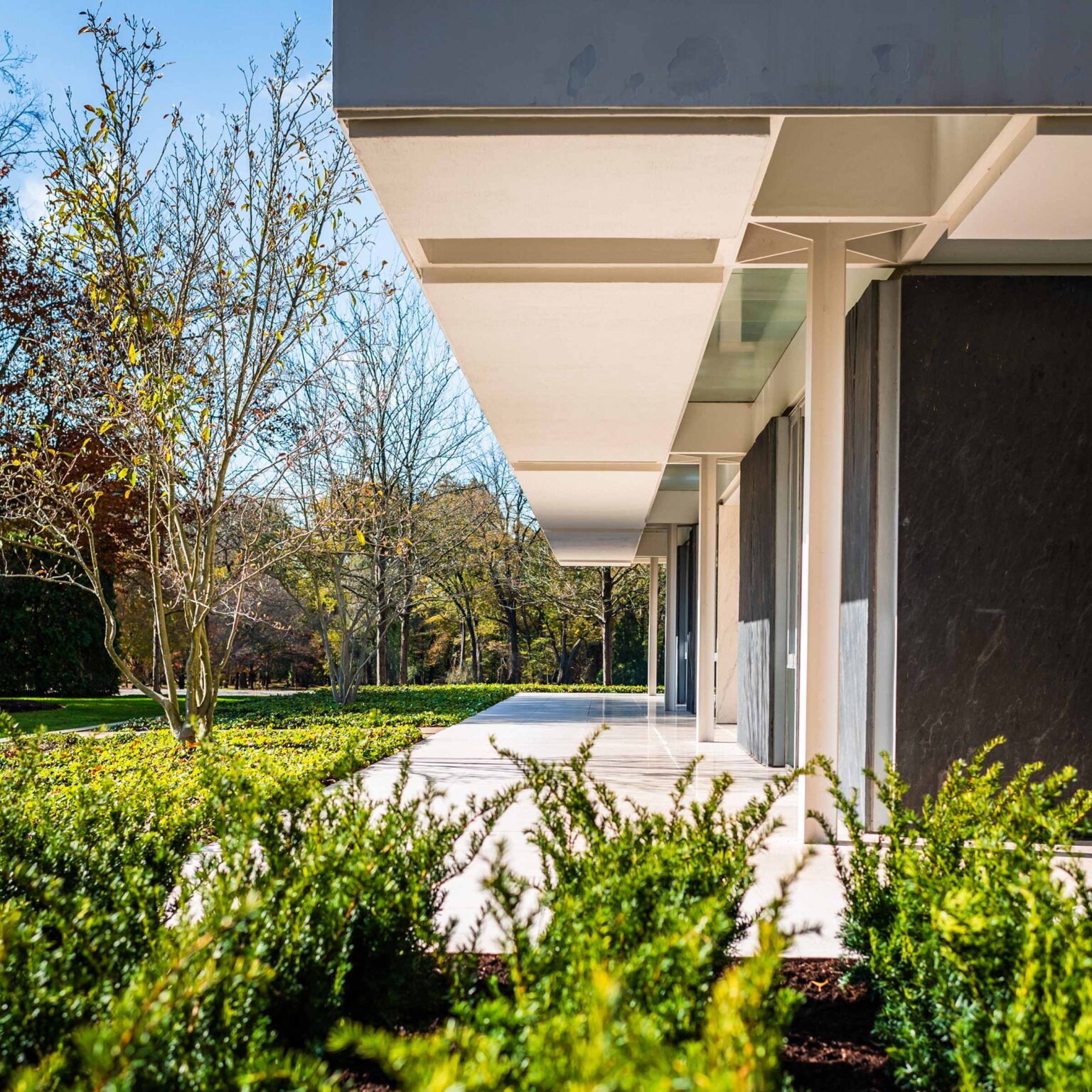
Functionality
Modern gardens prioritize functionality, creating outdoor spaces that serve various purposes. These spaces are designed for relaxation, dining, entertaining, or even food production. The concept of functional garden design emerged during the early 20th-century modernist movement, which sought to merge indoor and outdoor spaces for practical living. Architects and designers of this era, such as Le Corbusier and Walter Gropius, believed in the integration of architecture and design to improve the quality of life.
Functionality: Influential Designers
Isabelle Greene – American landscape architect known for her emphasis on functionality and practicality in garden design. She believes in creating outdoor spaces that seamlessly integrate with their surroundings and serve the needs of the users. Greene’s designs often prioritize usability, efficient circulation, and the integration of sustainable practices. Works include Lovelace garden and Valentine garden.
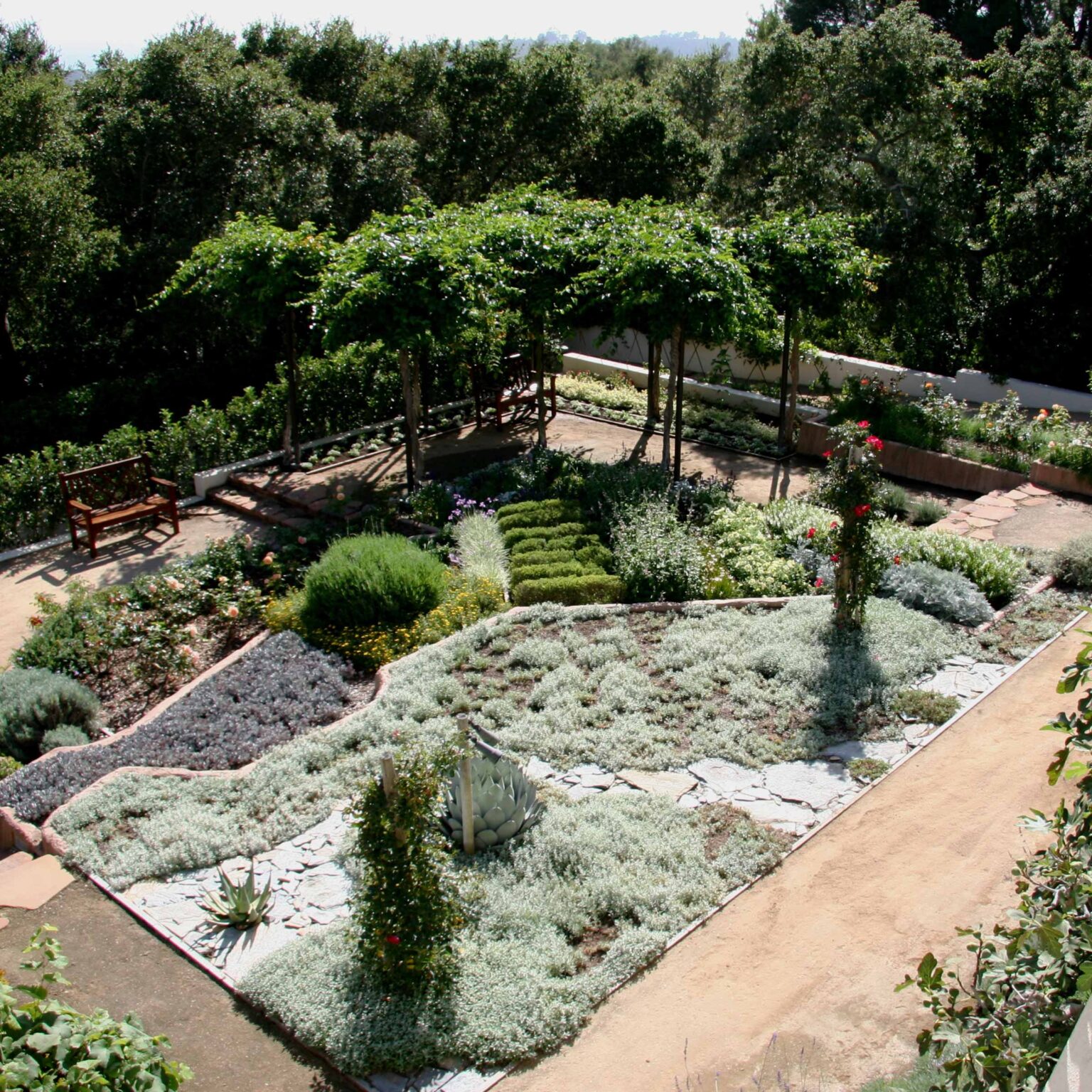
Martha Schwartz – American landscape architect and artist recognized for her innovative approach to garden design. Her works often feature bold and vibrant designs that emphasize functionality and user experience. Schwartz’s designs integrate elements such as seating, play areas, and circulation paths to create functional outdoor spaces. She is known for her use of unconventional materials and sculptural installations to add interest and enhance the usability of her designs. Notable projects by Martha Schwartz include the Myriad Gardens in Oklahoma City, Oklahoma, and the Grand Canal Square in Dublin, Ireland.
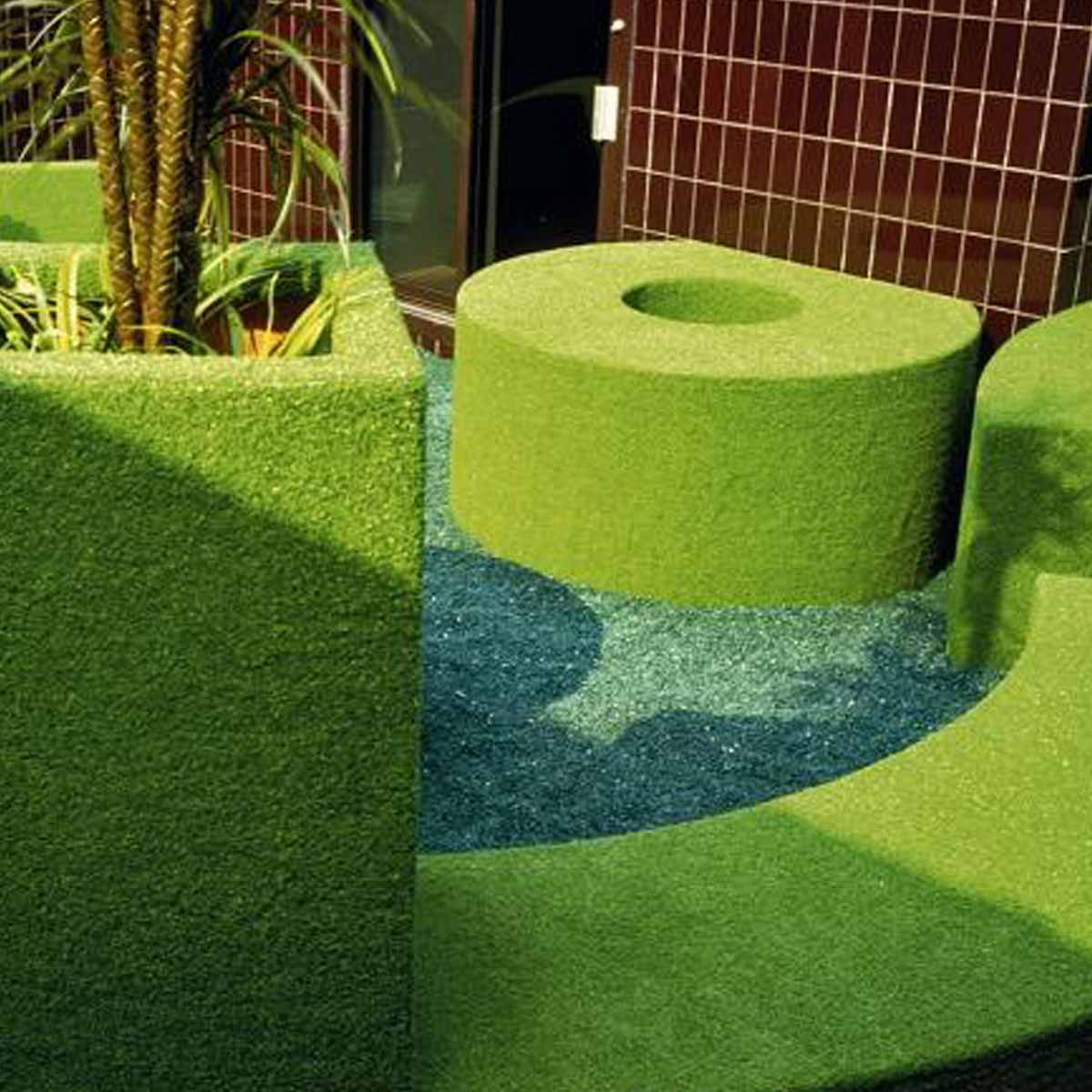
Kathryn Gustafson – American landscape architect and co-founder of Gustafson Guthrie Nichol, a renowned landscape architecture firm. Her designs are characterized by a strong focus on functionality and creating meaningful connections between people and nature. Gustafson’s landscapes often incorporate sustainable design practices and aim to enhance the user experience. Her notable projects include the Diana, Princess of Wales Memorial Fountain in London’s Hyde Park and the Lurie Garden in Millennium Park, Chicago.
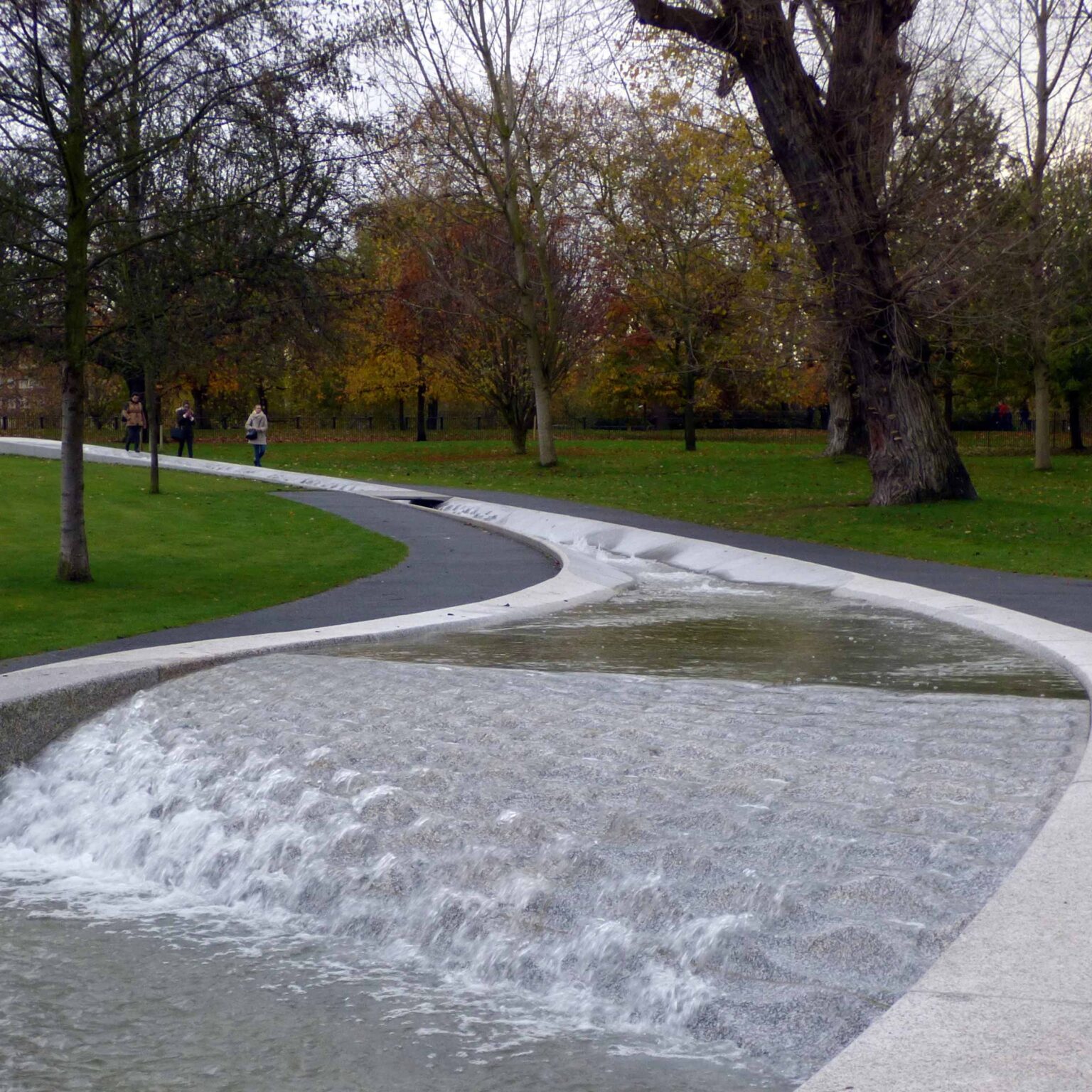
Bernard Trainor Australian landscape architect known for his emphasis on functionality, naturalism, and seamless integration of gardens with their surroundings. His designs often draw inspiration from the native landscapes of California, where he is based. Trainor’s landscapes prioritize functionality by incorporating outdoor living areas, drought-tolerant plantings, and sustainable water management techniques. His work showcases an understanding of how to create spaces that are both beautiful and practical. Notable projects include the Michael K. Green Garden in Carmel Valley, California, and the Sunken Garden in Pebble Beach, California.
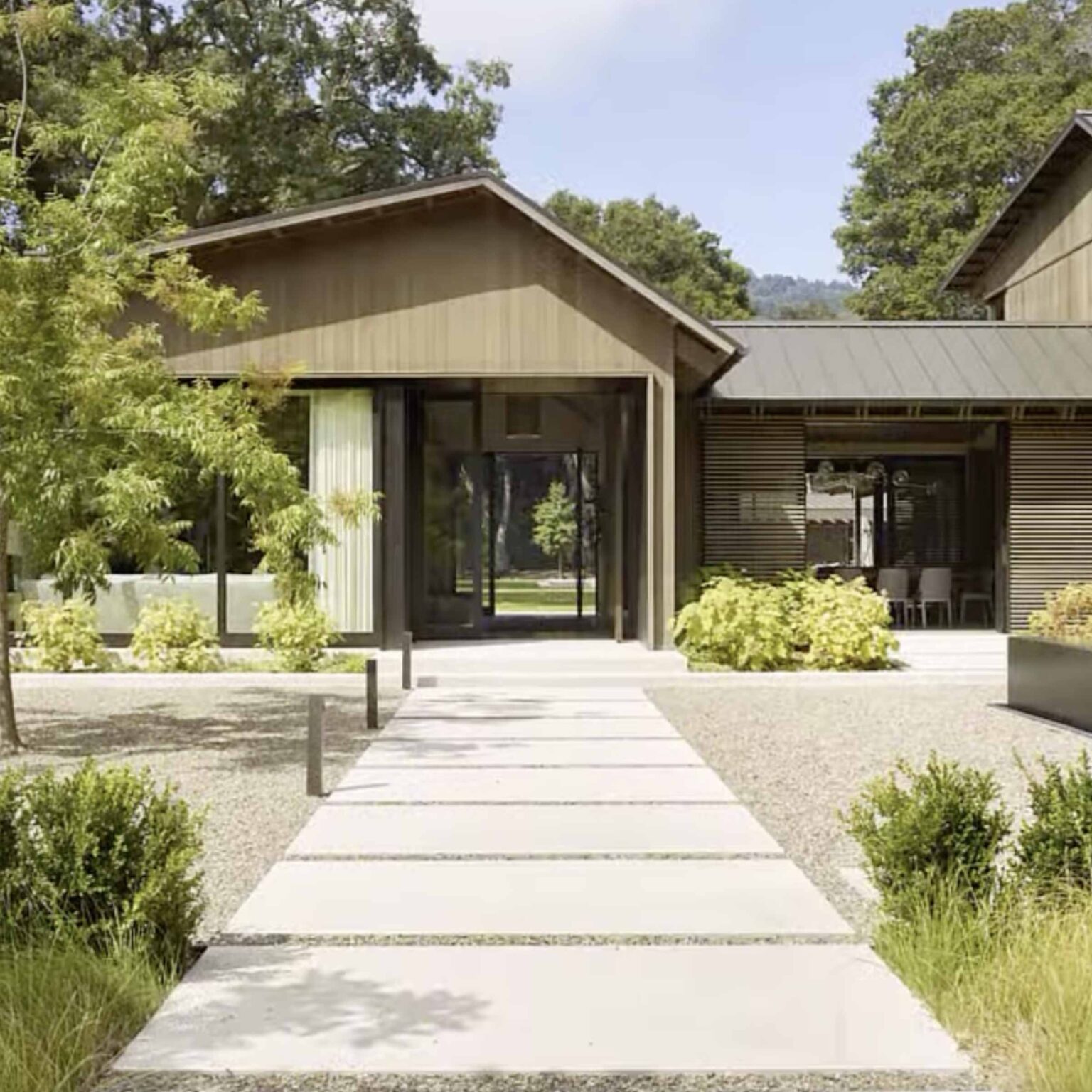
Le Corbusier – renowned (some might say infamous) architect and urban planner, emphasized the importance of outdoor spaces in his designs, advocating for functional gardens that seamlessly extended living areas to the exterior.
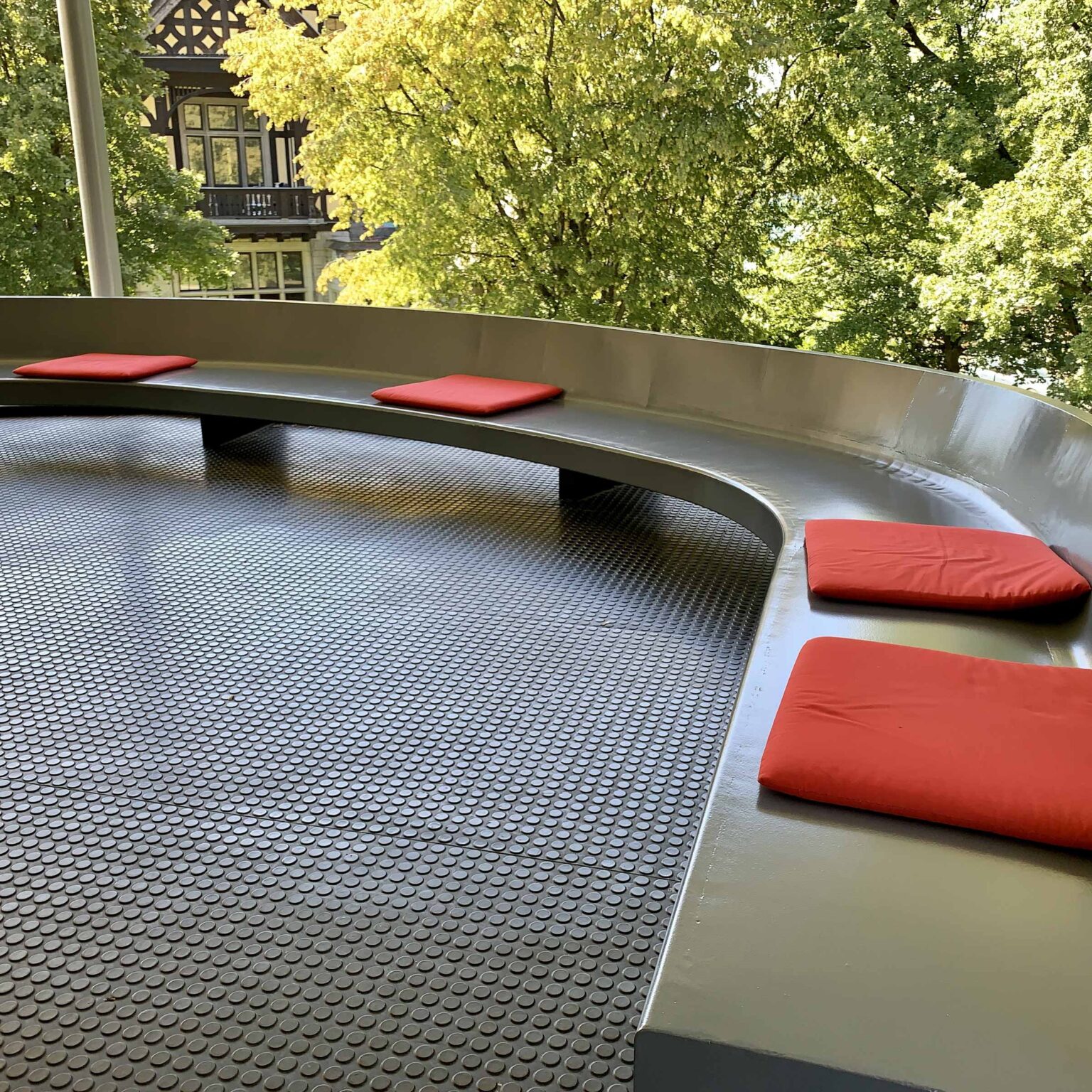
Integration with Architecture
Modern garden design aims to harmoniously integrate outdoor spaces with the surrounding architecture. This integration can be achieved through the use of similar materials, echoing geometric patterns, or extending interior design themes to the exterior. The Bauhaus movement, founded in Germany in the early 20th century, greatly influenced the integration of architecture and design, including gardens. The movement promoted the idea of “total works of art,” where all elements of design were unified.
Integration with Architecture: Influential Designers
Peter Zumthor – Swiss architect known for his sensitive approach to design and his emphasis on creating experiential spaces. He believes in the intimate connection between architecture, nature, and the human senses. Zumthor’s designs often incorporate carefully crafted gardens and outdoor spaces that complement and enhance the experience of his buildings. He is known for his meticulous attention to materiality, craftsmanship, and the tactile qualities of his designs. Notable works by Peter Zumthor that showcase his integration of gardens with buildings include the Thermal Baths in Vals, Switzerland (1996) and the Kunsthaus Bregenz in Austria (1997).
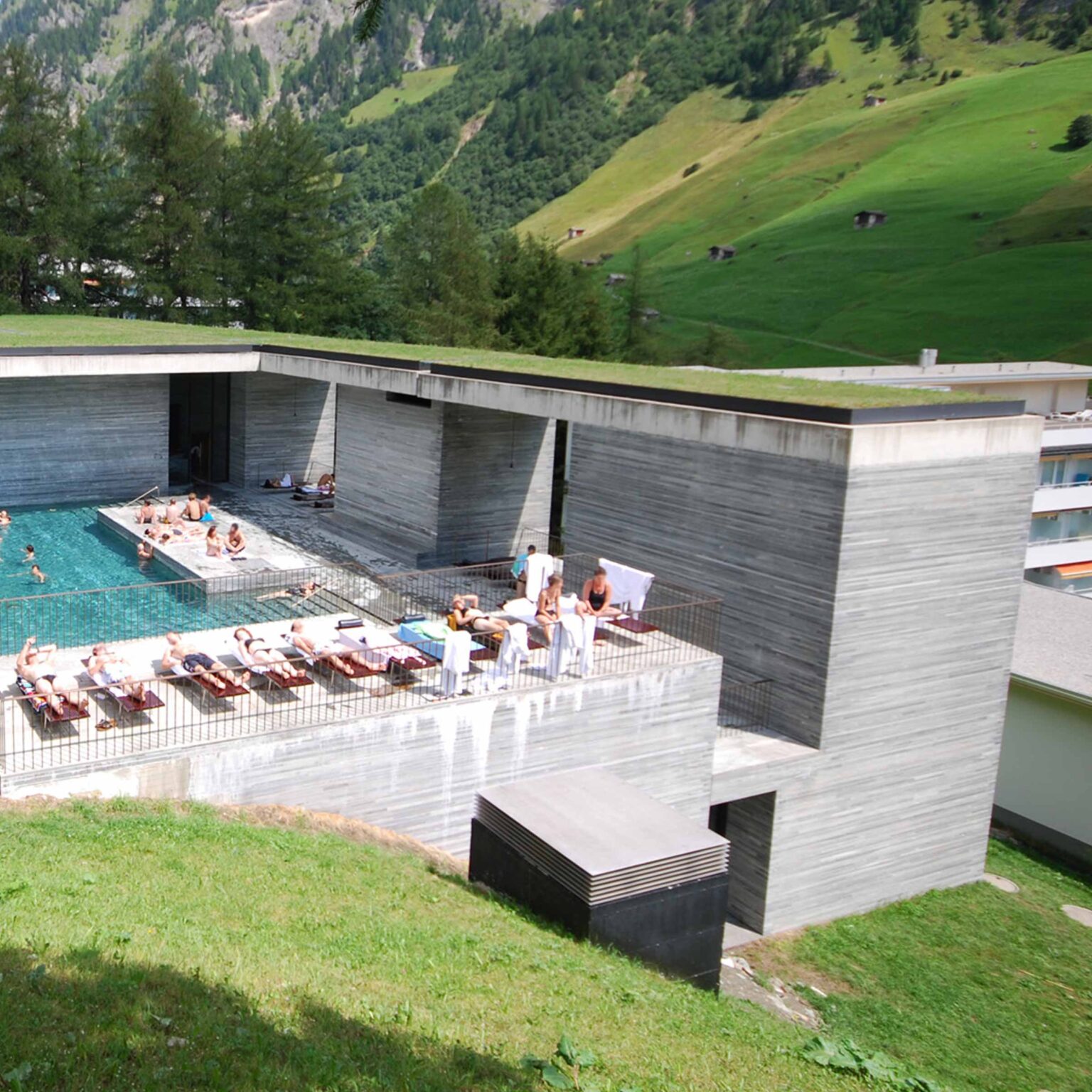
Frank Lloyd Wright – American architect and one of the pioneers of modern architecture. He believed in the integration of architecture with the natural environment. Wright’s designs often incorporated gardens, terraces, and courtyards that seamlessly connected with the surrounding landscape. His philosophy of “organic architecture” aimed to create harmonious relationships between buildings, people, and nature. Notable works that showcase Wright’s integration of gardens with buildings include Fallingwater (1935) and the Guggenheim Museum in New York City (1959).
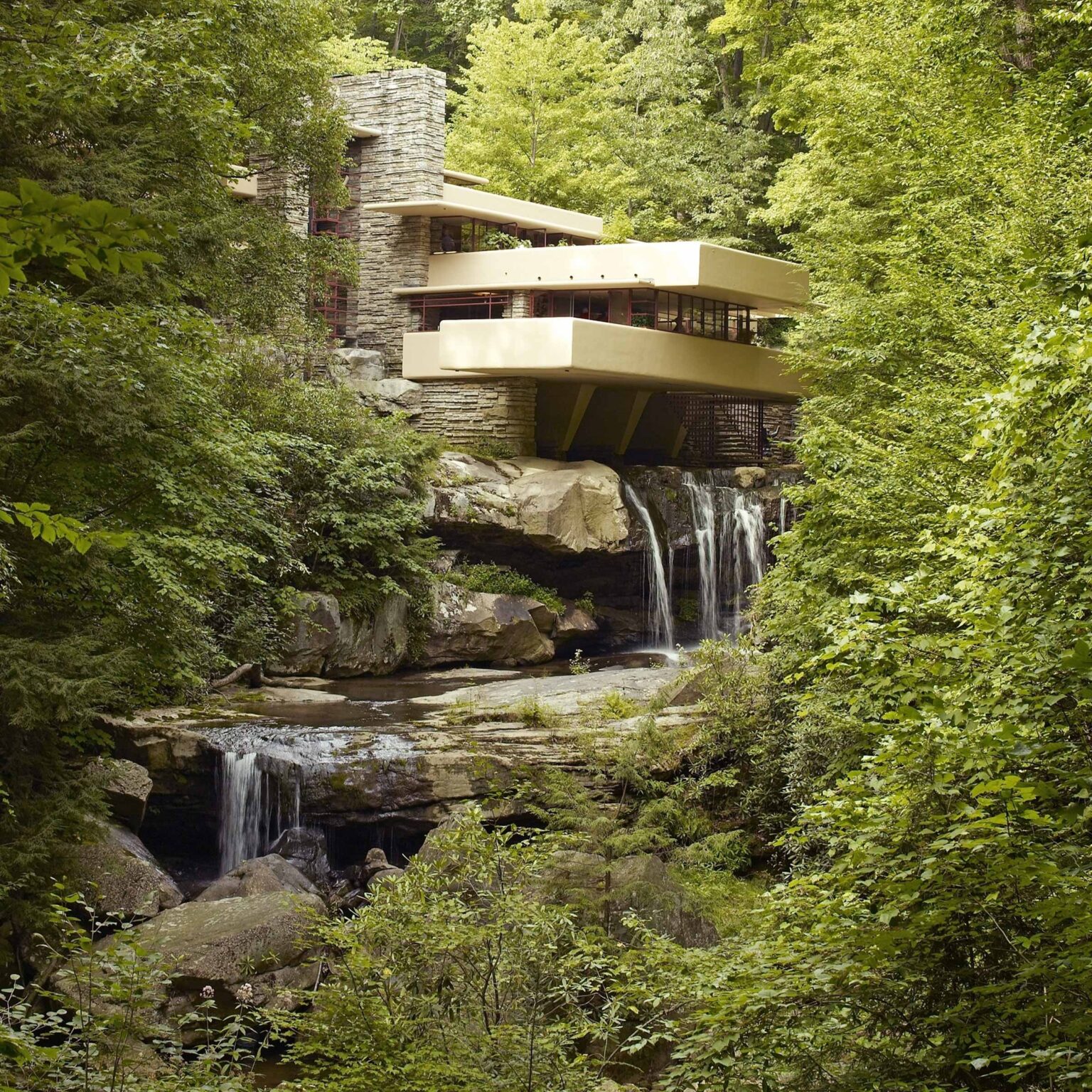
Kenzo Tange – Japanese architect who played a significant role in the development of modern architecture in post-war Japan. Tange believed in the harmonious integration of buildings and nature. His designs often incorporated landscaped gardens, rooftop gardens, and atriums to create visual continuity between indoor and outdoor spaces. Tange’s approach to garden integration was influenced by Japanese traditions and the concept of “borrowed scenery” (shakkei), where the surrounding natural landscape is incorporated into the design. Notable works by Kenzo Tange that demonstrate his integration of gardens with buildings include the Yoyogi National Gymnasium in Tokyo (1964) and the Hiroshima Peace Memorial Park (1955-1964).
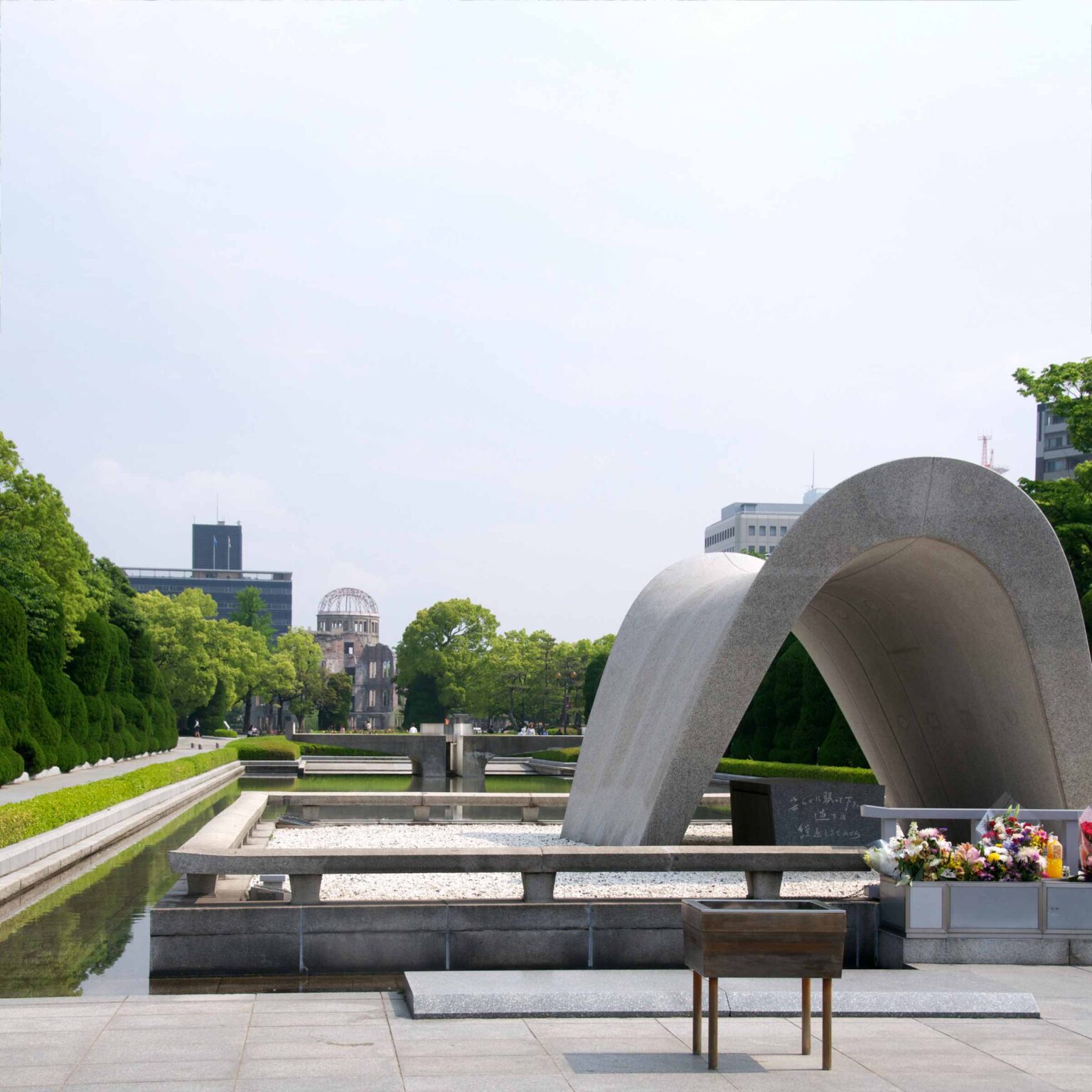
Luis Barragán Mexican architect known for his poetic use of colour, light, and space. He was deeply influenced by the local vernacular architecture and the vibrant landscapes of Mexico. Barragán’s designs often featured carefully curated gardens that acted as integral components of his buildings. He believed in the spiritual and emotional power of gardens and utilized water features, courtyards, and vegetation to create a sense of tranquillity and serenity. Notable works by Luis Barragán that exemplify his integration of gardens with buildings include the Casa Barragán (1948) and the San Cristobal Stables (1966).
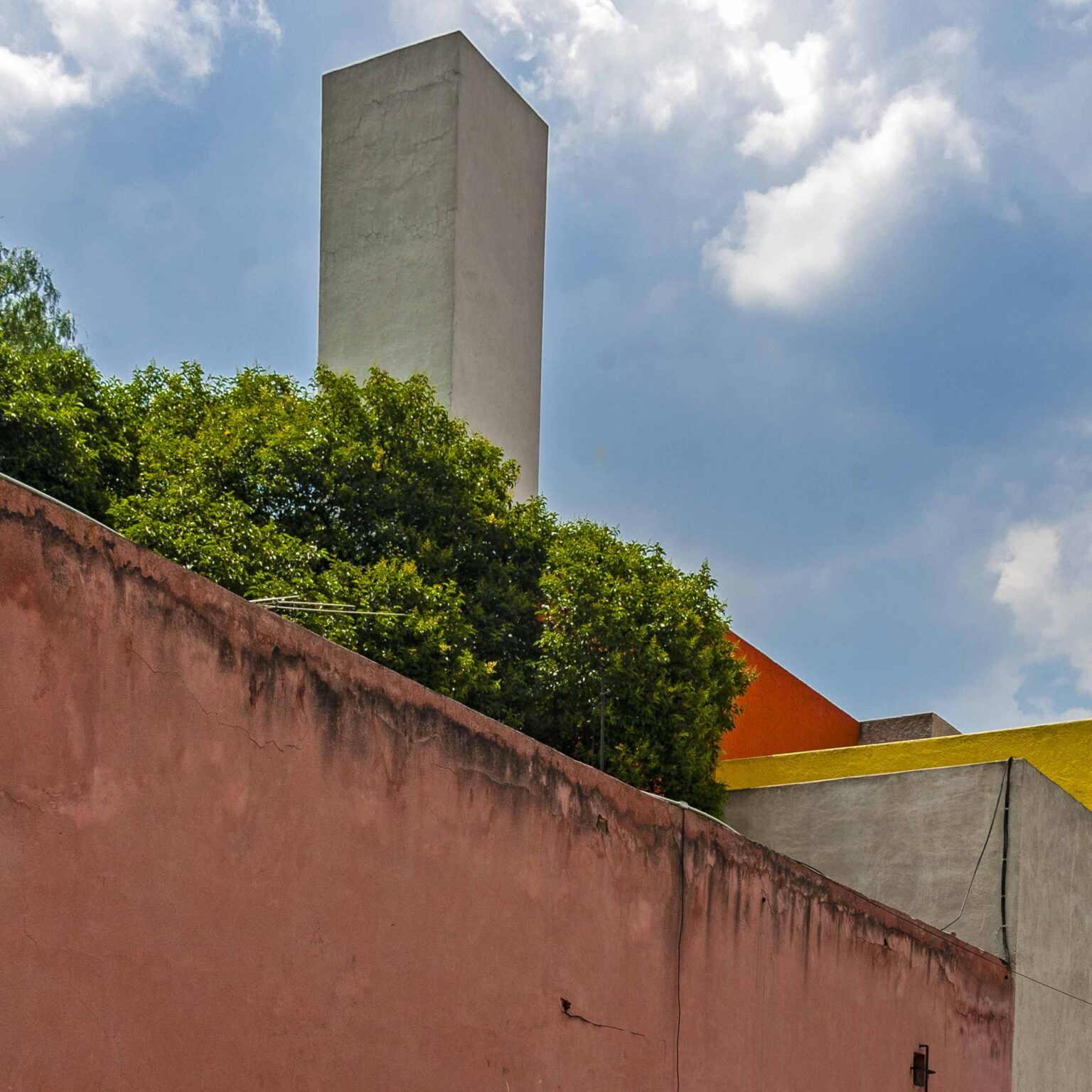
Walter Gropius – German-American architect and founder of the Bauhaus School, believed in creating holistic design experiences. His approach to architecture and design influenced the integration of gardens with buildings. Gropius championed the idea of integrating art, craft, and technology in architecture, seeking to create functional and aesthetically pleasing buildings. His designs featured clean lines, geometric forms, and a harmonious integration of space and materials. Gropius’ impact on architecture and design continues to resonate, shaping the modern architectural landscape. Works incorporating gardens with architecture include Bauhaus building in Dessau, the Gropius House in Massachusetts and The Embassy of the United States in Athens, Greece.
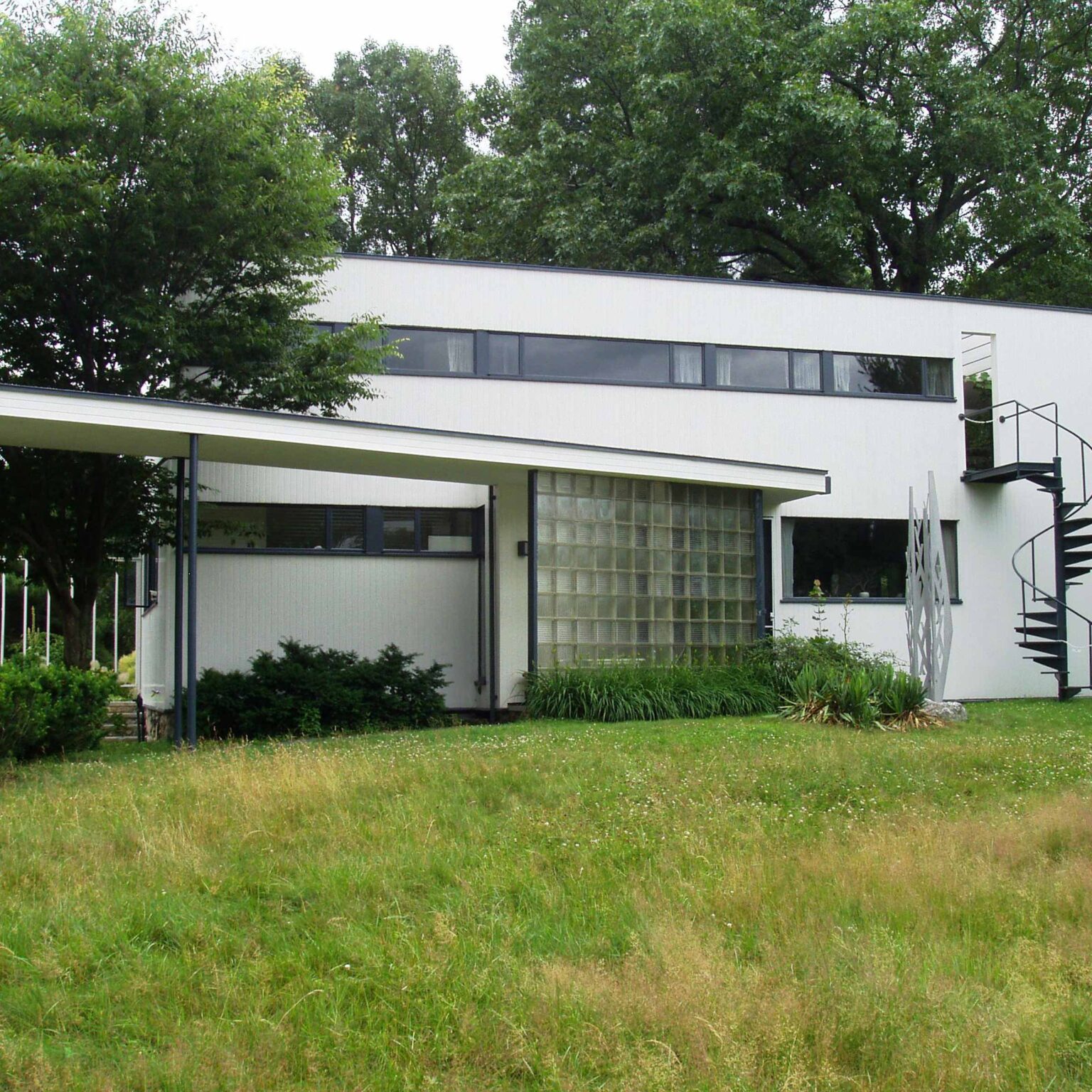
Sustainable Design
Modern garden design increasingly incorporates sustainable practices to promote environmental consciousness. This may involve using native and drought-tolerant plants, implementing water-saving irrigation systems, utilizing recycled materials, or integrating renewable energy sources. The origins of sustainable design can be traced back to traditional agricultural practices and the early conservation movements of the late 19th century. In recent years, there has been a heightened awareness of ecological and environmental issues, leading to a stronger focus on sustainability in garden design.
Sustainability: Influential Designers
Piet Oudolf – Dutch plantsman and garden designer recognized for his naturalistic and sustainable planting designs. His approach embraces the use of native plants, dynamic plant communities, and ecological practices. Oudolf’s designs often feature perennials, grasses, and carefully selected plant combinations that create visually striking and environmentally friendly gardens. Notable projects by Piet Oudolf include the High Line in New York City, where he collaborated on the planting design, and the Lurie Garden in Millennium Park, Chicago.
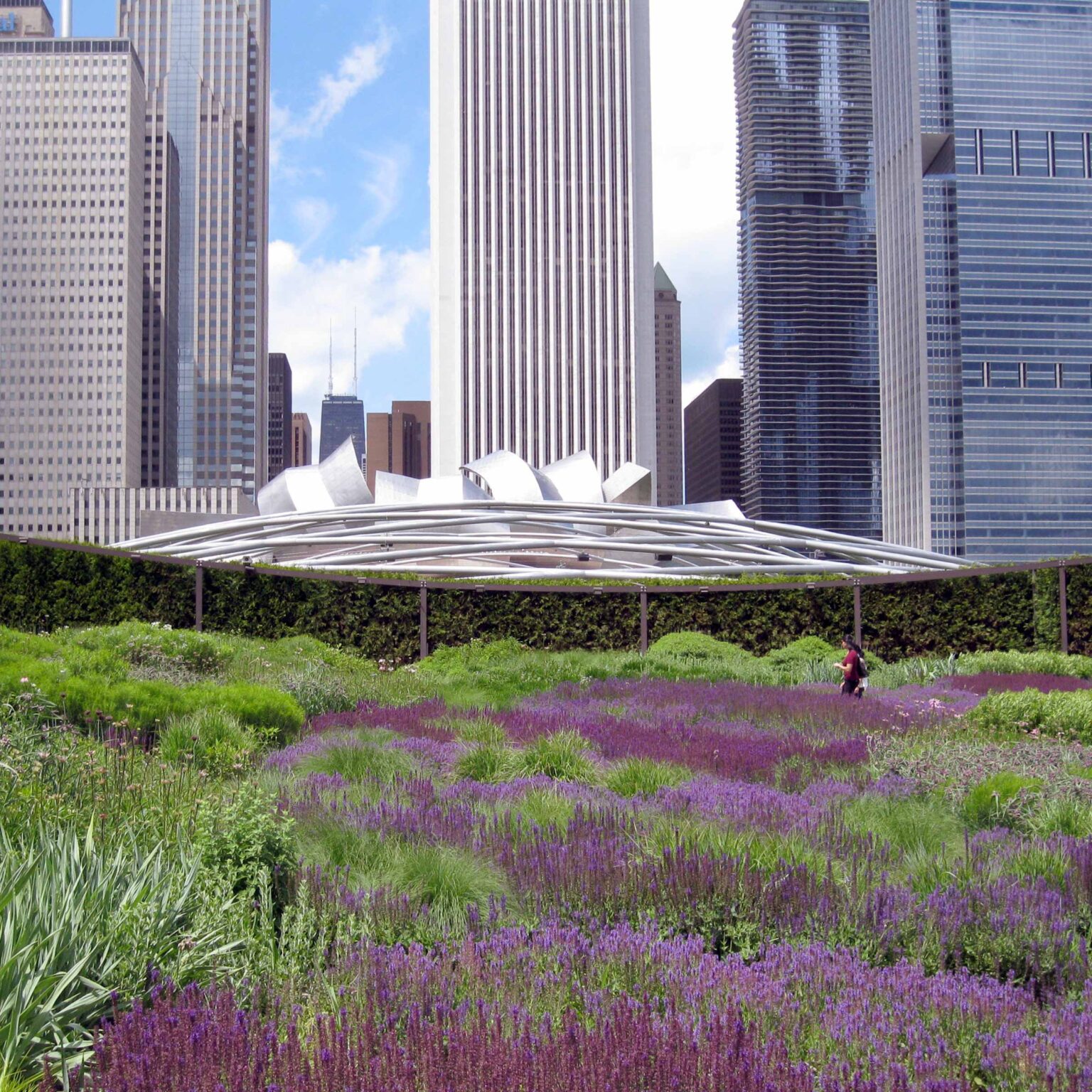
Julie Moir Messervy – American landscape designer and author known for her commitment to sustainable design and creating meaningful connections between people and the natural world. Her designs often incorporate ecological principles, such as rainwater management and native plantings, to create resilient and environmentally conscious landscapes. Messervy’s notable projects include the Toronto Music Garden in Canada, inspired by Bach’s music, and the Peterson Garden Project in Chicago, which focuses on urban agriculture and community engagement.
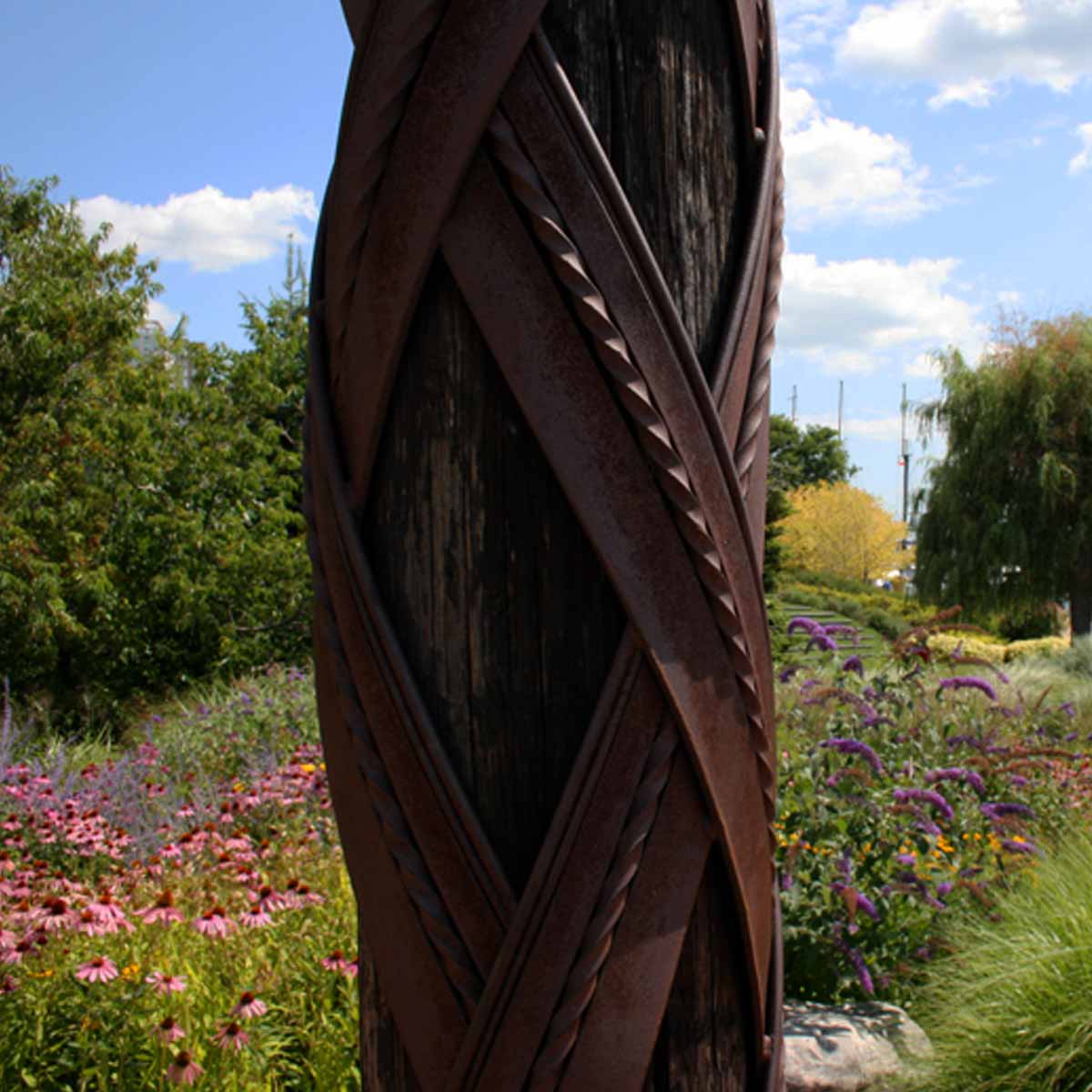
James Corner – British landscape architect and urban designer known for his innovative and sustainable approach to design. He is the founder of Field Operations, a renowned landscape architecture firm. Corner’s designs often blend ecological restoration, urban planning, and public space design to create sustainable and socially engaging environments. Notable projects by James Corner include the High Line in New York City, where he led the design team, and the Tongva Park in Santa Monica, California, which combines sustainable features with cultural significance.
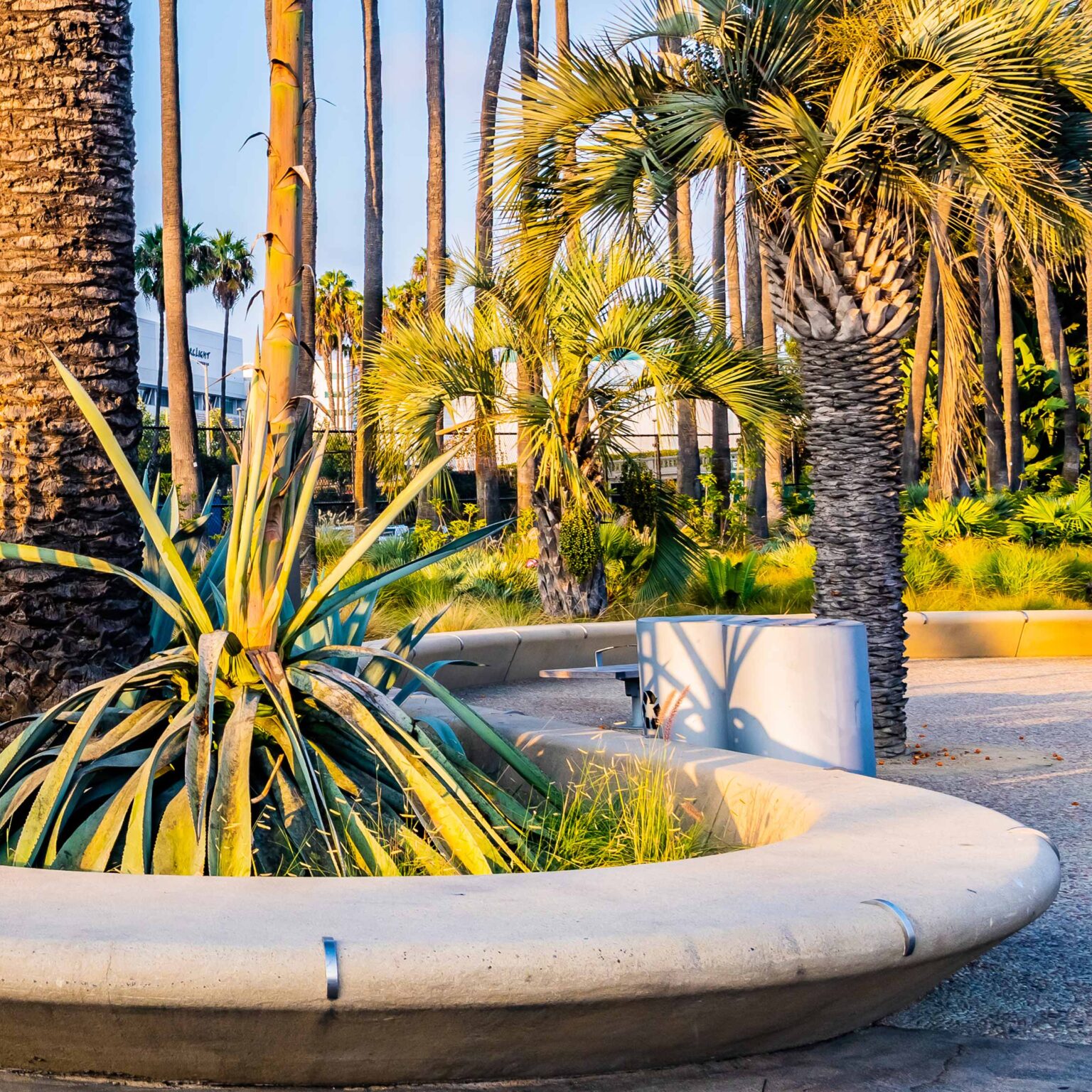
Julie Bargmann – American landscape architect and founder of D.I.R.T. Studio, known for her work in ecological restoration and sustainable design. She focuses on transforming degraded landscapes into vibrant and functional spaces. Bargmann’s projects often incorporate sustainable stormwater management, native plantings, and regenerative design strategies. Notable works by Julie Bargmann include the Steel Yard in Providence, Rhode Island, where she revitalized a former industrial site into a sustainable arts and educational centre, and the Greensboro Center City Park in North Carolina, which features sustainable stormwater management and native plantings.
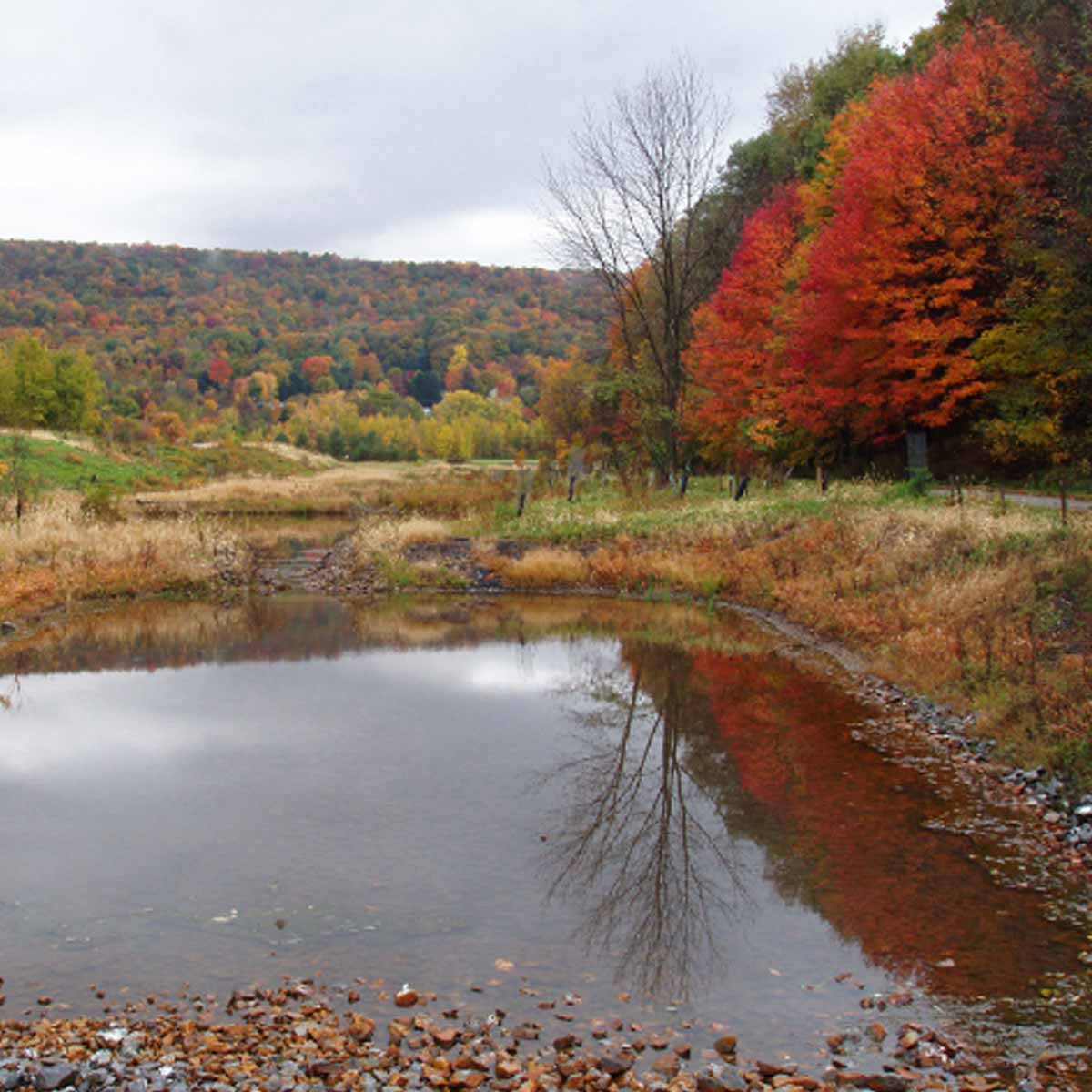
Kongjian Yu – Chinese landscape architect and founder of Turenscape, a renowned landscape architecture firm. He is known for his pioneering work in ecological planning and design, particularly in relation to water management and urban landscapes. Yu’s designs often prioritize sustainable water-sensitive design, ecological restoration, and the integration of natural systems. Notable projects by Kongjian Yu include the Red Ribbon Park in Qinhuangdao, China, where he transformed a degraded waterfront into a sustainable and vibrant park, and the Qunli Stormwater Park in Harbin, China, which combines stormwater management with recreational spaces.
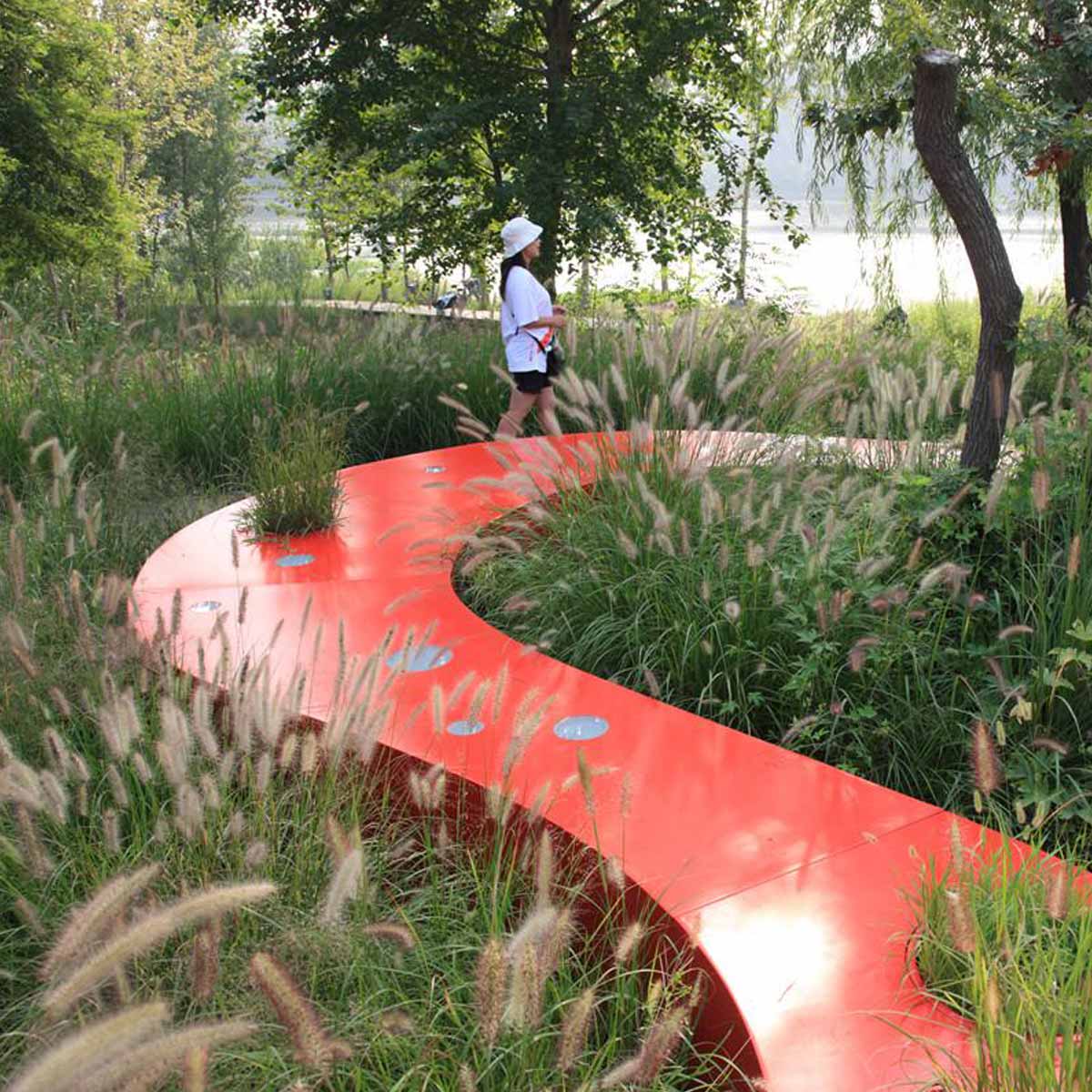
Naturalistic Planting
Modern gardens often feature naturalistic planting schemes that mimic patterns and compositions found in nature. Inspired by the English landscape movement of the 18th century, which sought to create picturesque landscapes, modern naturalistic planting employs a mix of perennials, grasses, and carefully selected native plants to create dynamic and ecologically diverse gardens. This approach encourages a more relaxed and informal style of planting.
Naturalistic Planting: Influential Designers
Dan Pearson – British garden designer known for his naturalistic planting style and his deep understanding of the relationship between plants and their environments. Pearson’s designs often feature a seamless integration of plants with the surrounding landscape, creating habitats that support biodiversity and ecological resilience. Notable projects by Dan Pearson include the Millennium Garden at the Royal Botanic Gardens, Kew in London, and the Tokachi Millennium Forest in Hokkaido, Japan.
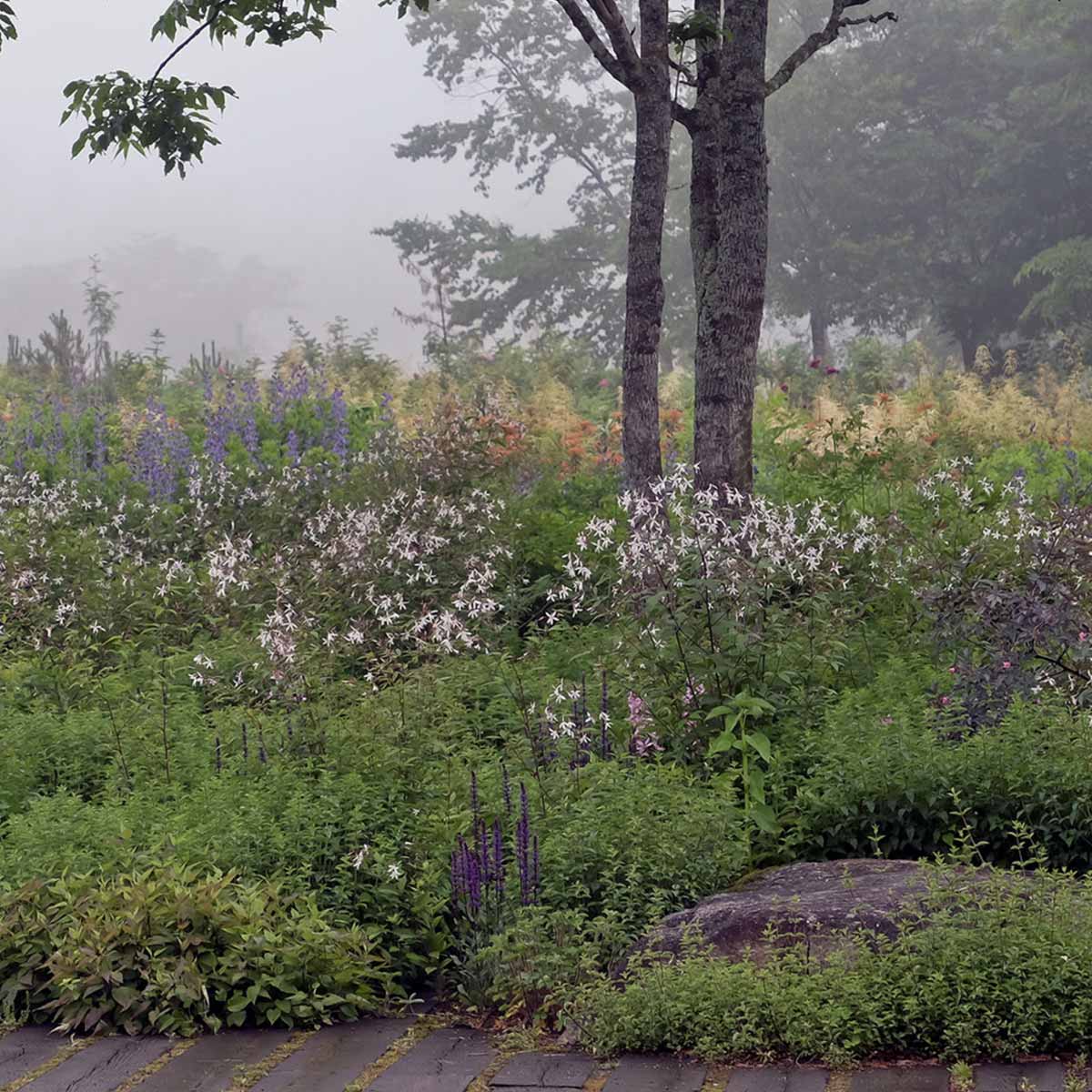
Beth Chatto – British plantswoman and garden designer known for her expertise in naturalistic planting and ecological gardening. She believed in the importance of selecting plants that thrive in their specific conditions, focusing on sustainable and environmentally friendly gardening practices. Chatto’s most notable work is the Beth Chatto Gardens in Essex, England, which showcases her innovative use of plant communities and sustainable planting techniques.
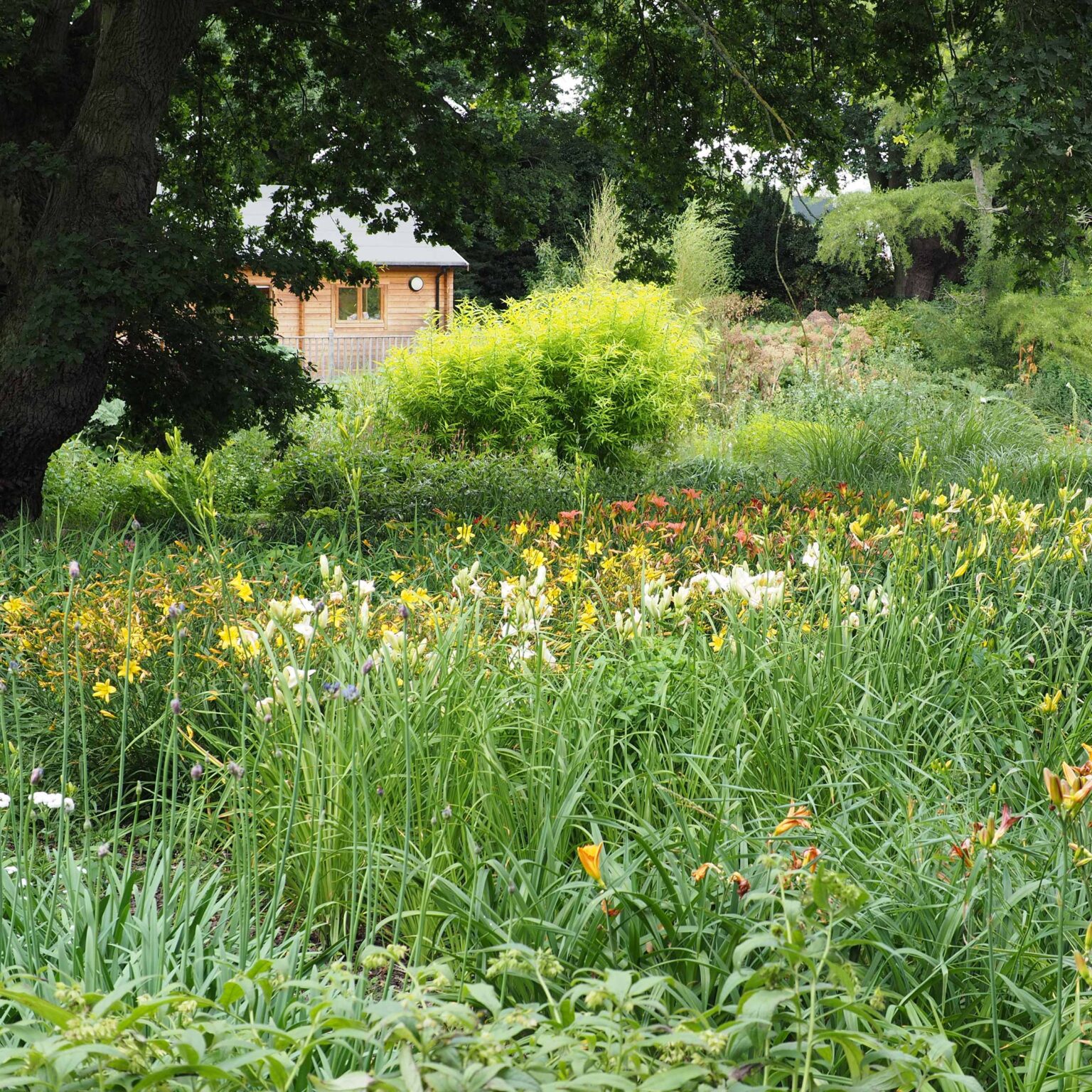
Gertrude Jekyll – renowned British garden designer and horticulturist known for her influential work in naturalistic planting design during the late 19th and early 20th centuries. Jekyll’s designs emphasized colour harmonies, textural contrasts, and the use of abundant flowering plants. She believed in creating gardens that appeared natural while still being carefully planned. Notable works by Gertrude Jekyll include her collaboration with architect Edwin Lutyens on numerous gardens, such as Hestercombe Gardens in Somerset, England, and the gardens at Folly Farm in Berkshire, England.
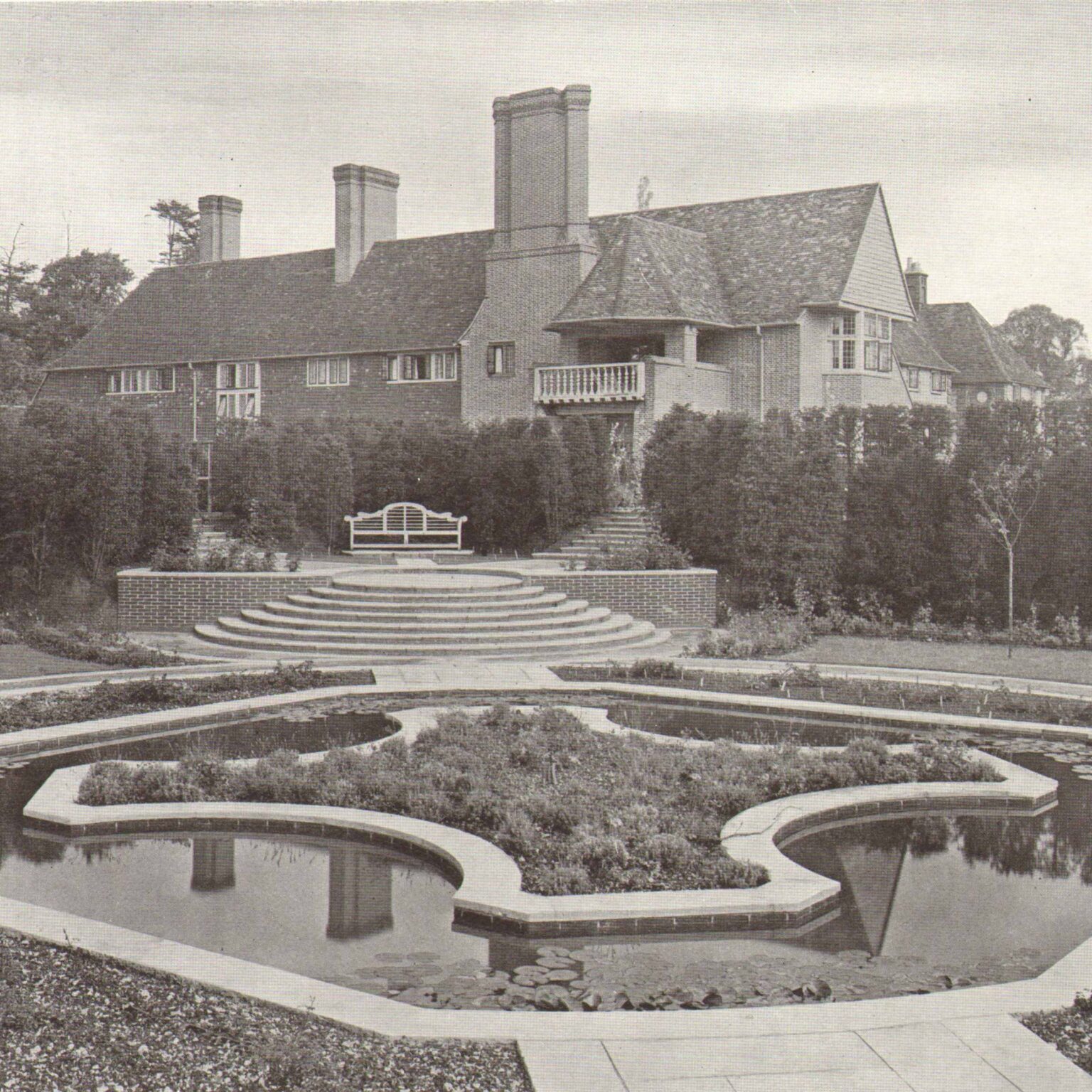
Wolfgang Oehme and James van Sweden – landscape architects who pioneered the “New American Garden” style, characterized by naturalistic plantings of ornamental grasses and perennials. They sought to create dynamic and sustainable landscapes inspired by the prairies and meadows of North America. Notable projects by Oehme and van Sweden include the Federal Reserve Plaza in Washington, D.C., and the Battery Park City Park in New York City.
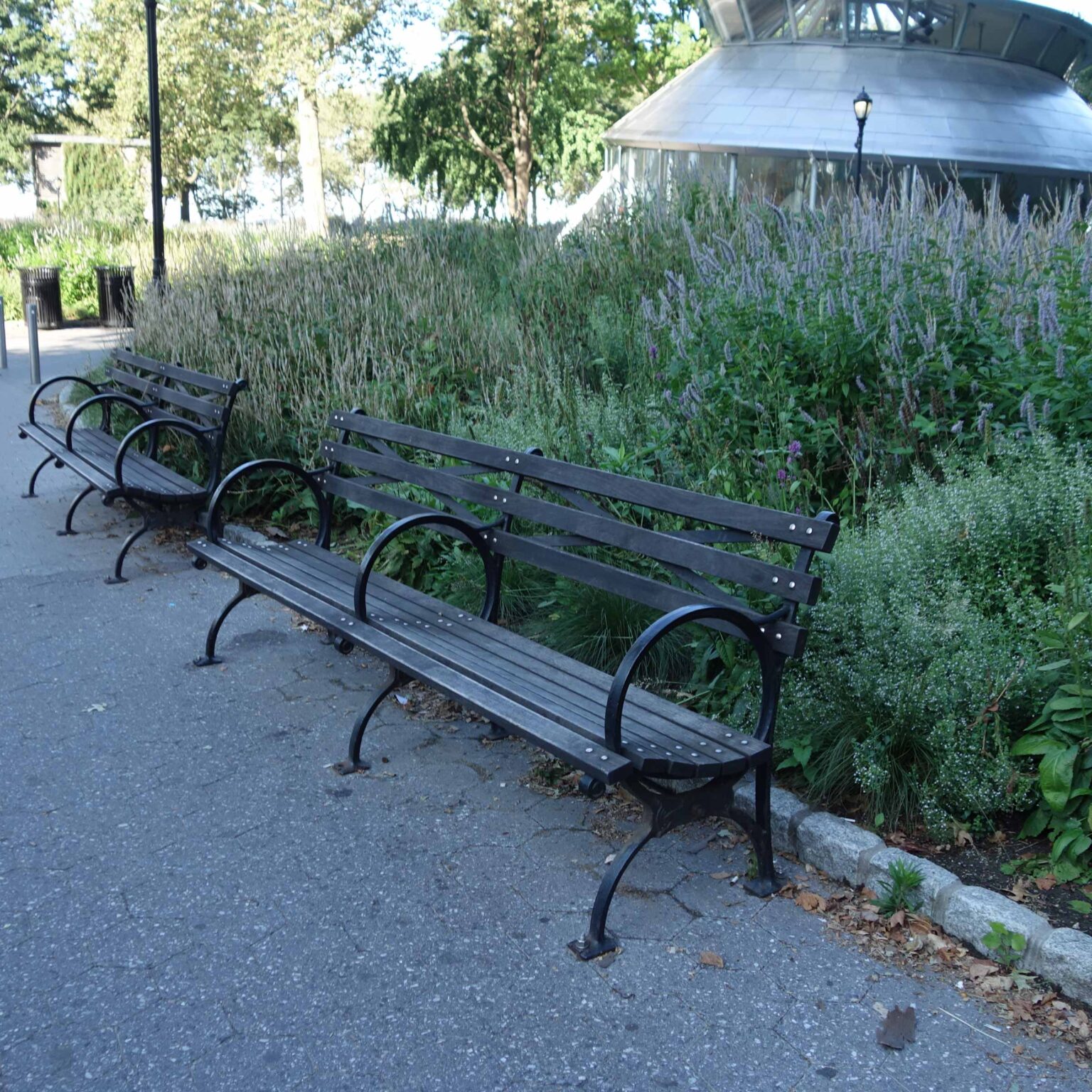
Nigel Dunnett – British landscape designer and plantsman recognized for his work in ecological and naturalistic planting design. He is known for his use of wildflower meadows, herbaceous perennials, and sustainable planting techniques. Dunnett’s notable projects include the planting design for the Queen Elizabeth Olympic Park in London, where he created biodiverse meadows and sustainable landscapes, and the Barbican Centre in London, where he transformed the Brutalist architecture with naturalistic plantings.
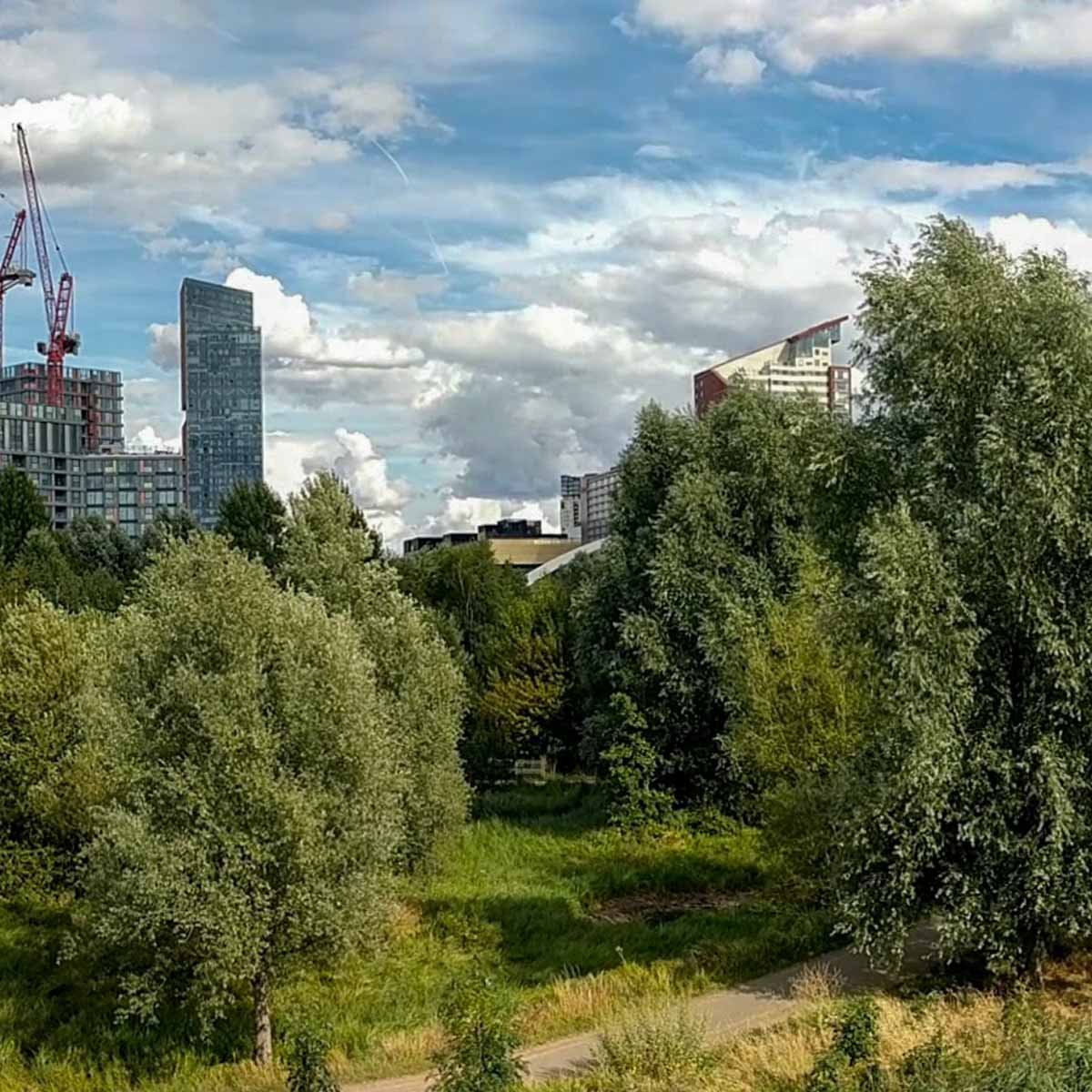
James Hitchmough – British professor and landscape architect specializing in naturalistic planting design. He focuses on creating visually striking landscapes that mimic the ecological dynamics found in natural habitats. Hitchmough’s work often involves the use of herbaceous perennials and grasses in large-scale plantings. Notable projects by James Hitchmough include the Olympic Park at King Abdullah University of Science and Technology in Saudi Arabia, where he created a diverse and sustainable landscape, and the Trentham Estate in Staffordshire, England, known for its stunning floral displays and meadows.
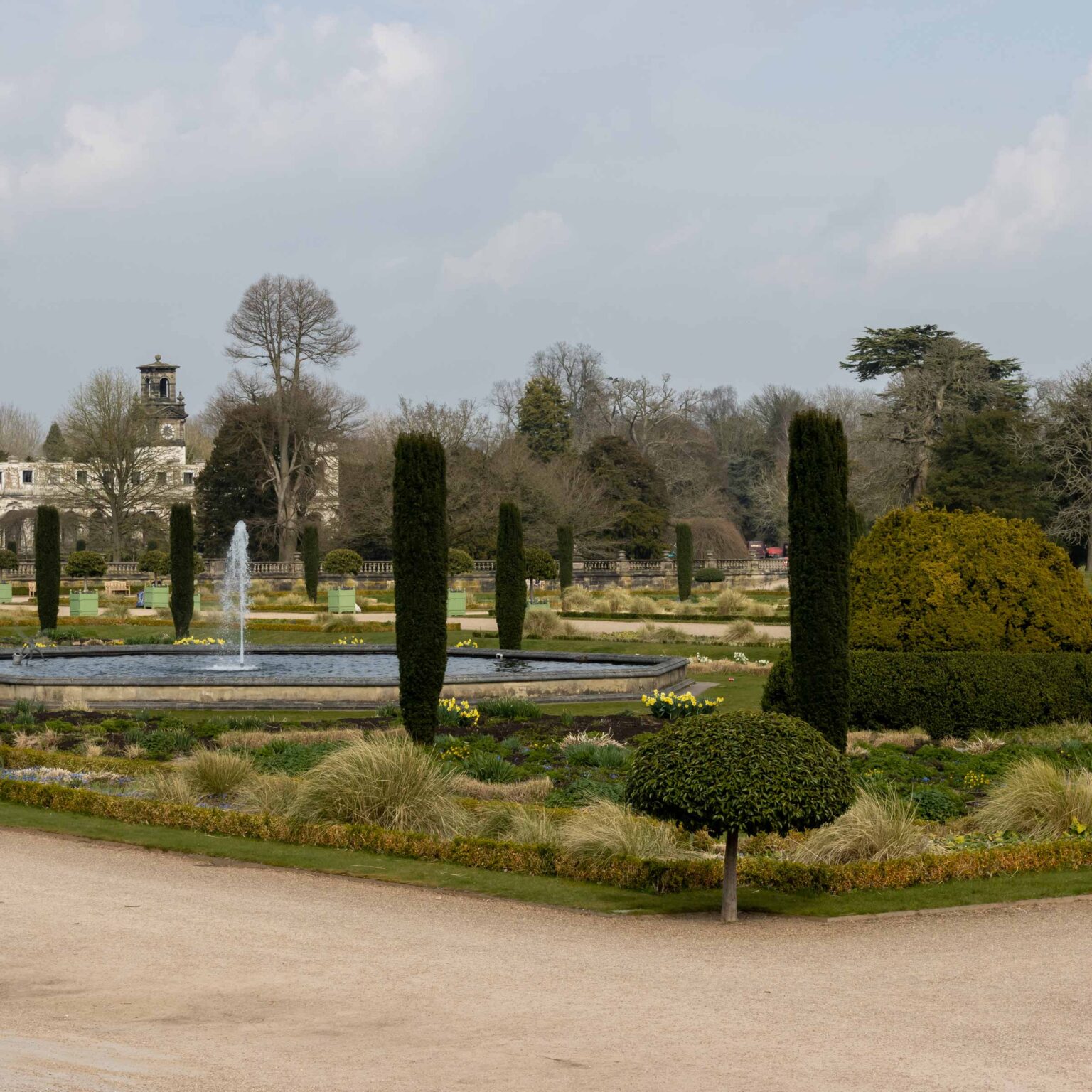
Outdoor Rooms
Modern garden design often involves creating distinct outdoor rooms, each with a specific function and a sense of privacy and intimacy. These spaces can be formed using hedges, fences, or strategic placement of plants and structures. The concept of outdoor rooms has historical roots in ancient Roman gardens, where different areas were designated for specific activities, such as dining, socializing, or contemplation.
Outdoor Rooms: Influential Designers
Tom Stuart-Smith – British garden designer celebrated for his innovative approach to garden design and his ability to create outdoor rooms that evoke a sense of place and tranquillity. Stuart-Smith’s designs often feature carefully composed plantings, paths, and structural elements to define outdoor spaces within the garden. Notable examples of his work where outdoor rooms are used as a key design theme include Broughton Grange in Oxfordshire, England, and the Trentham Estate in Staffordshire, England, where his designs create intimate and inviting outdoor rooms.
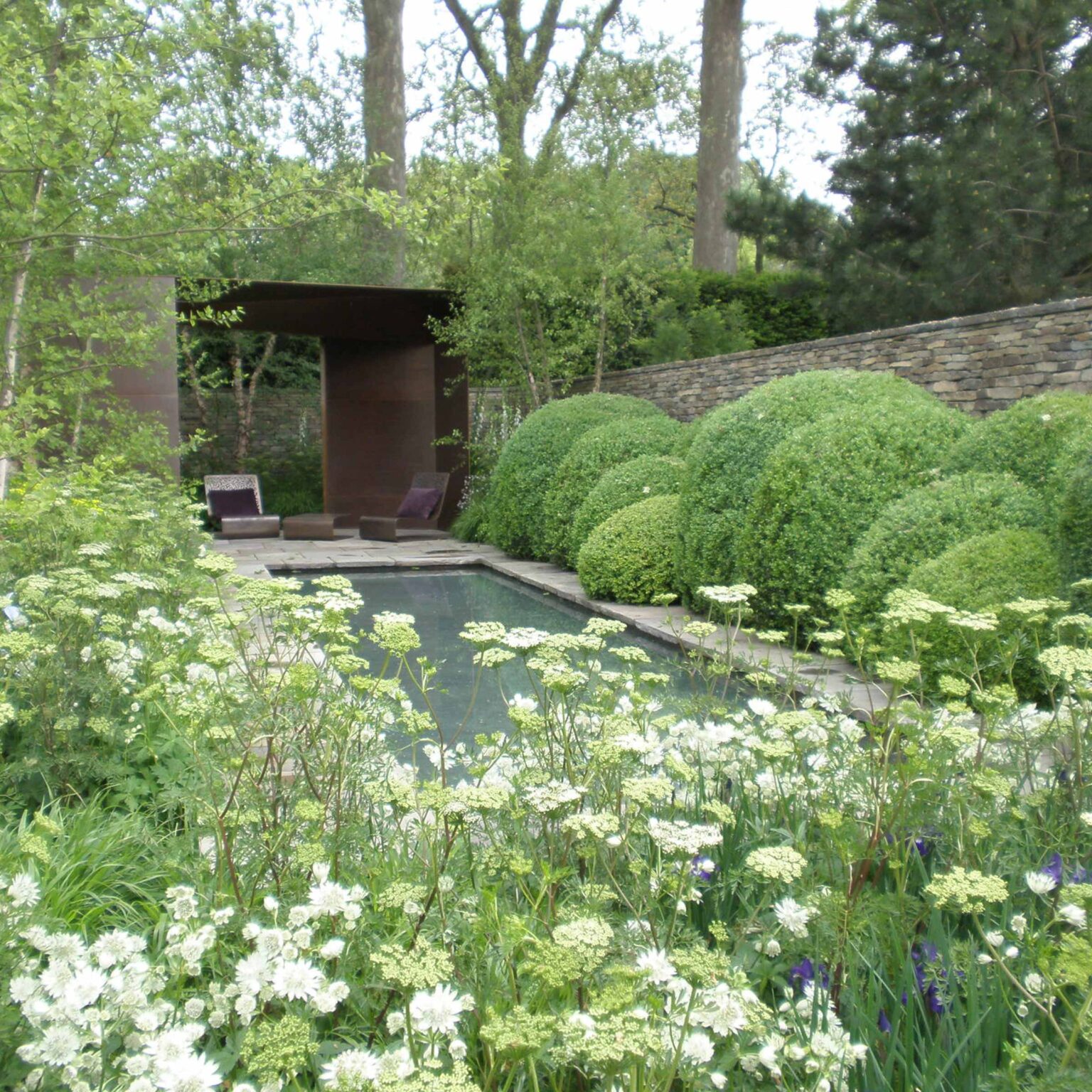
Arabella Lennox-Boyd – British garden designer recognized for her skilful incorporation of outdoor rooms into her garden designs. Her works often feature distinct areas within the garden defined by hedges, walls, or changes in elevation. Lennox-Boyd’s outdoor rooms create a sense of intimacy and provide functional spaces for relaxation and entertaining. Notable examples of her work where outdoor rooms are a key design theme include Gresgarth Hall in Lancashire, England, and the Chelsea Flower Show gardens, where she has consistently showcased her talent for creating outdoor rooms with distinct atmospheres.
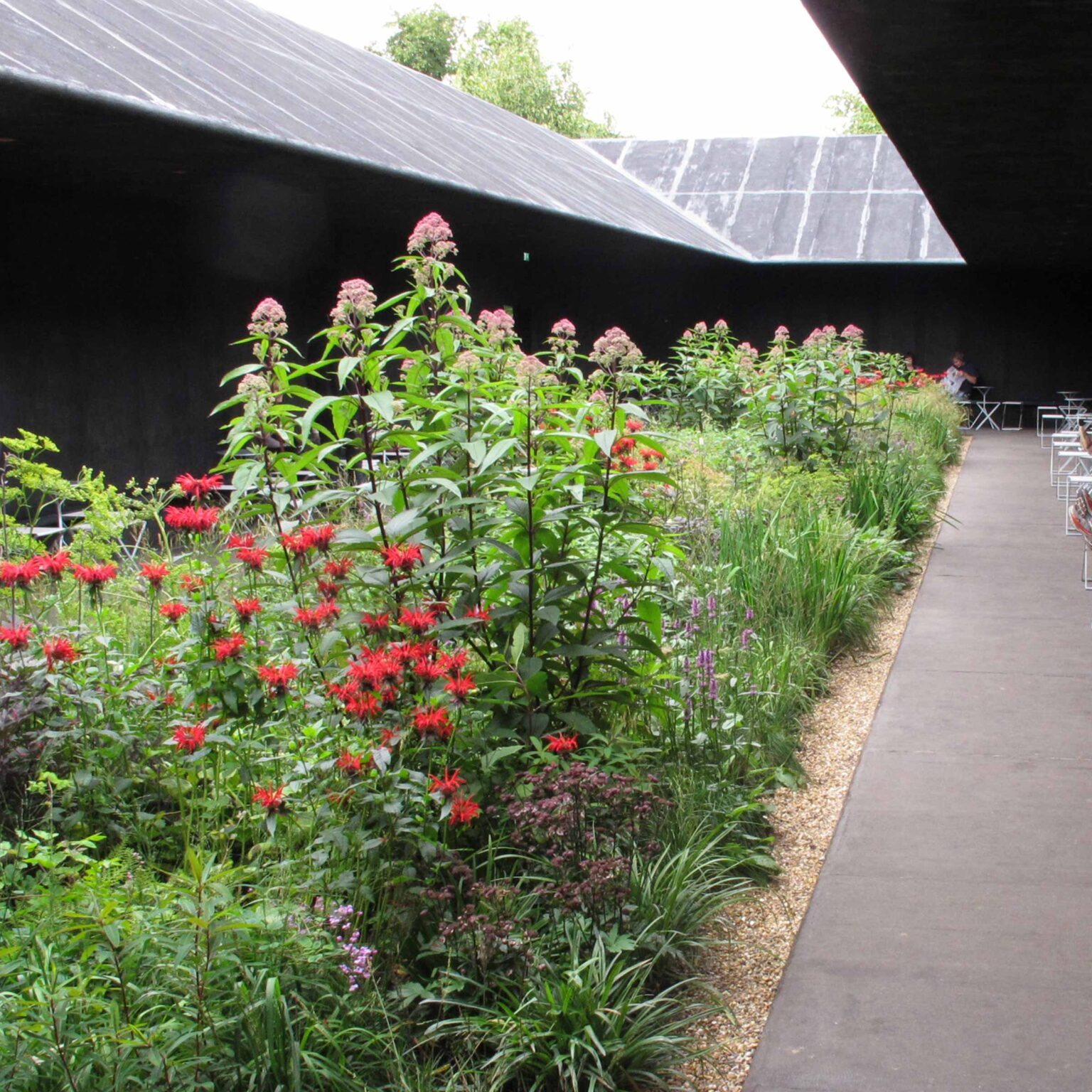
Sir Edwin Lutyens – British architect, and Gertrude Jekyll collaborated on numerous garden designs, creating iconic outdoor rooms that blended architecture and landscape seamlessly. Lutyens’ architectural structures, such as pergolas and gazebos, combined with Jekyll’s plantings, formed intimate and functional outdoor rooms. Notable examples of their work include the gardens at Hestercombe in Somerset, where Lutyens designed the formal garden areas and Jekyll provided the planting design, and Castle Drogo in Devon, where their collaboration created outdoor rooms with striking vistas.
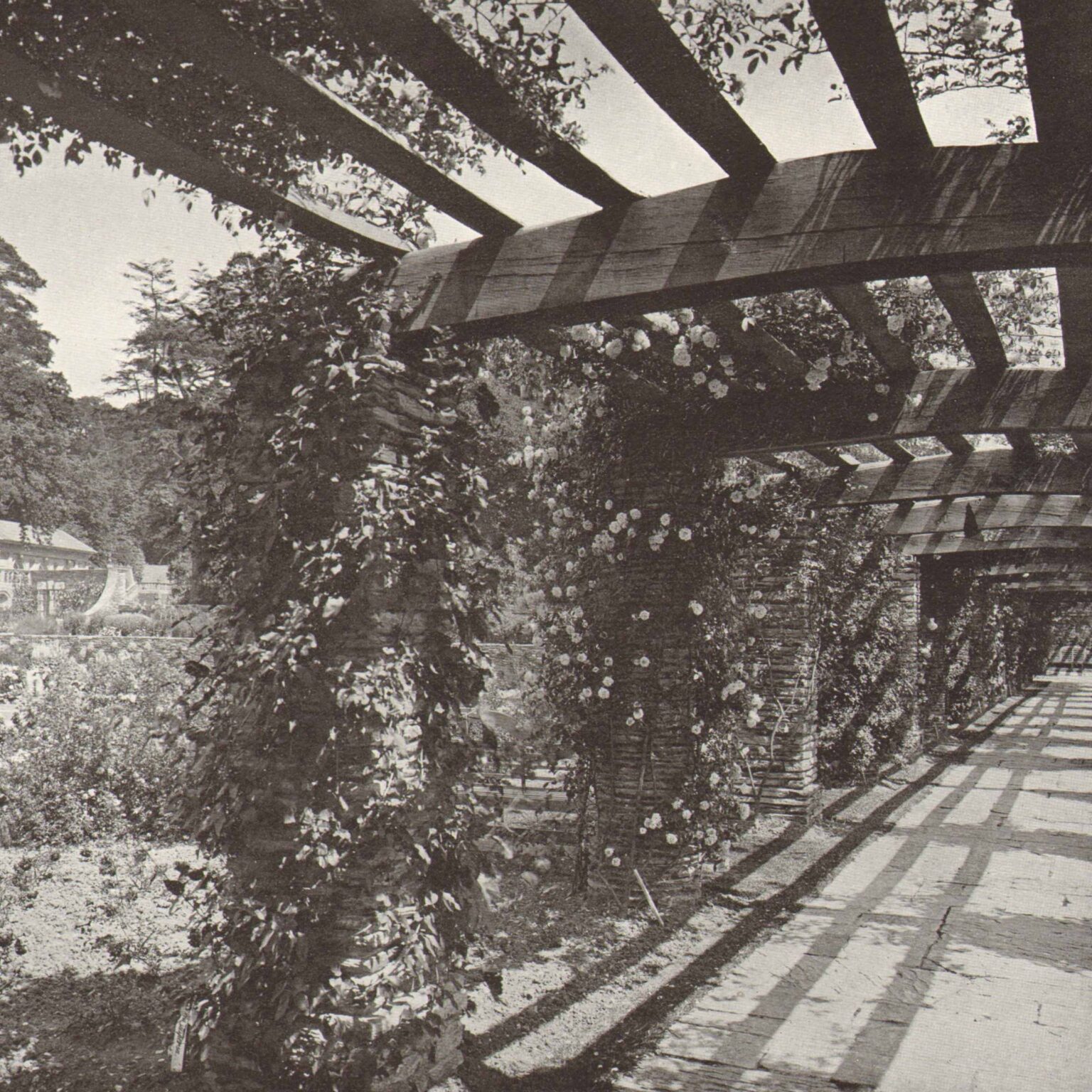
Isamu Noguchi – Japanese-American artist and landscape architect renowned for his innovative designs that blurred the lines between art and landscape. His works often incorporated outdoor rooms as integral components. Noguchi utilized sculptural elements, walls, and plantings to create distinct and purposeful spaces within his landscapes. Notable projects where outdoor rooms are a key design theme include the UNESCO Garden in Paris, France, which features a series of outdoor rooms with unique atmospheres, and the Noguchi Museum Garden in New York City, where outdoor spaces are thoughtfully designed to complement the art installations.
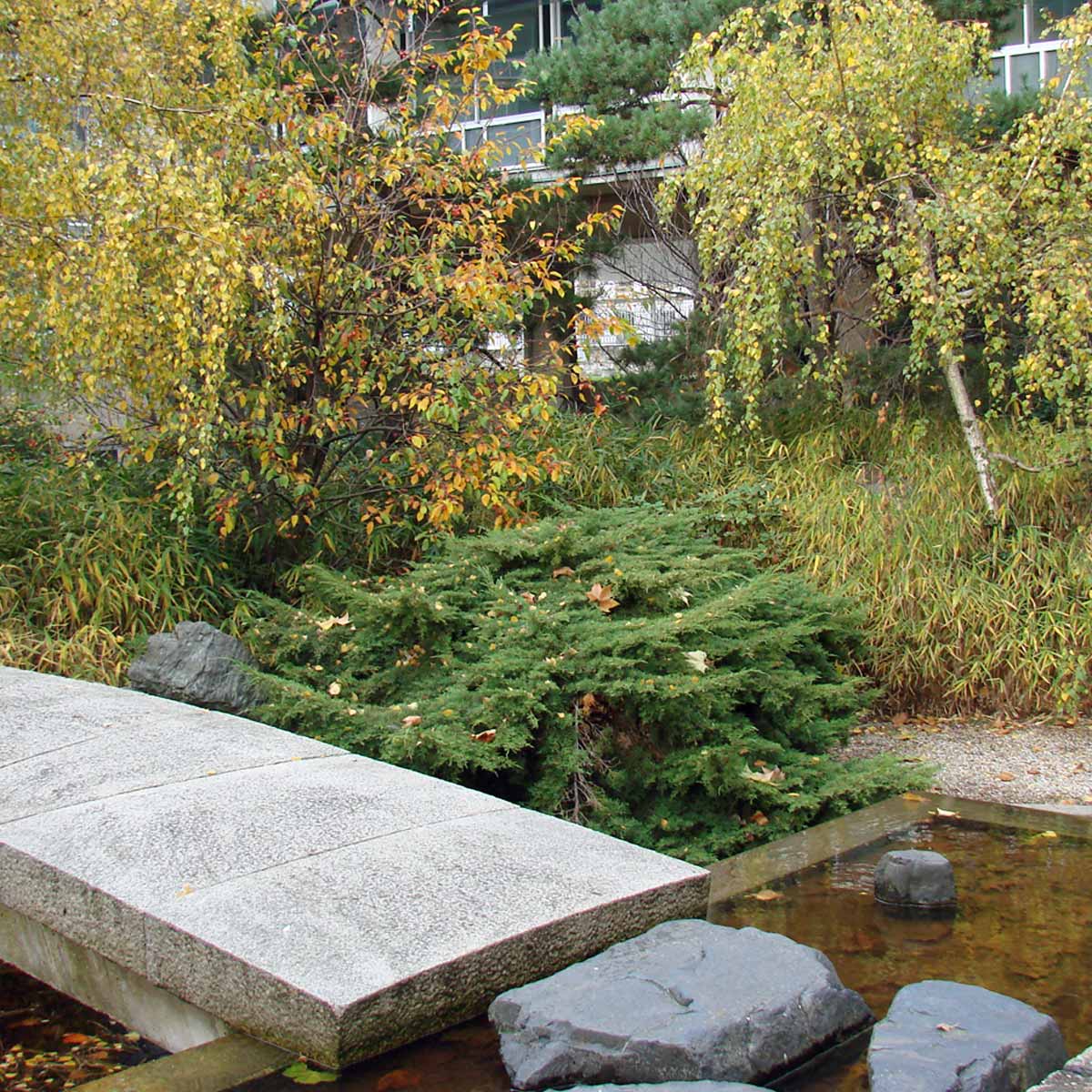
Andrea Cochran – American landscape architect known for her minimalist and sculptural approach to garden design. She creates outdoor rooms that seamlessly integrate with the surrounding architecture and landscape. Cochran’s designs often feature clean lines, carefully chosen materials, and spatial compositions that define functional and intimate outdoor spaces. Notable projects where outdoor rooms are used as a key design theme include the Glenbrook Residence in California, where outdoor rooms are formed by sculptural walls and plantings, and the Windhover Contemplative Center at Stanford University, which incorporates outdoor rooms designed for reflection and meditation.
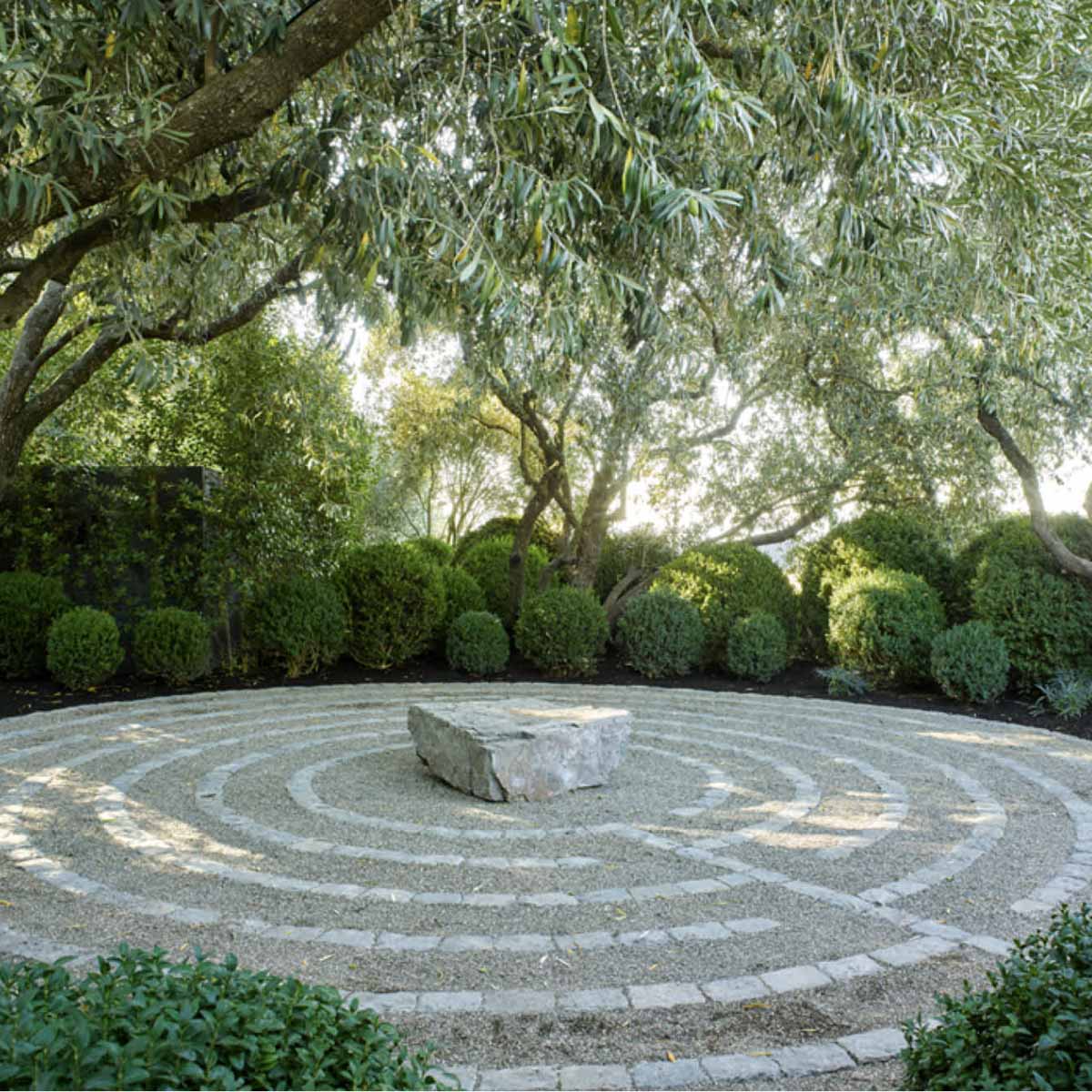
Emphasis on Texture
Texture plays a vital role in modern garden design, adding visual interest and tactile appeal. It can be achieved through diverse plant selections with varying leaf shapes, sizes, and textures, as well as through the use of materials like gravel, stone, wood, and metal. The exploration of texture in modern garden design has been influenced by contemporary art movements, such as Cubism, Abstract Expressionism, and Minimalism, which experimented with form and texture.
Emphasis on Texture: Influential Designers
Dan Kiley – as mentioned above for his minimalist influences, Kiley is also a strong proponent of the use of texture in landscape design. He considered texture as an essential element in his designs, using it to create visual interest and tactile appeal. Kiley’s works often featured bold geometric forms and contrasting textures. Notable projects where texture played a key role include the Miller House Garden in Columbus, Indiana, where he utilized a variety of textured plantings, and the United States Air Force Academy campus in Colorado Springs, where he incorporated diverse materials to enhance texture in the landscape.
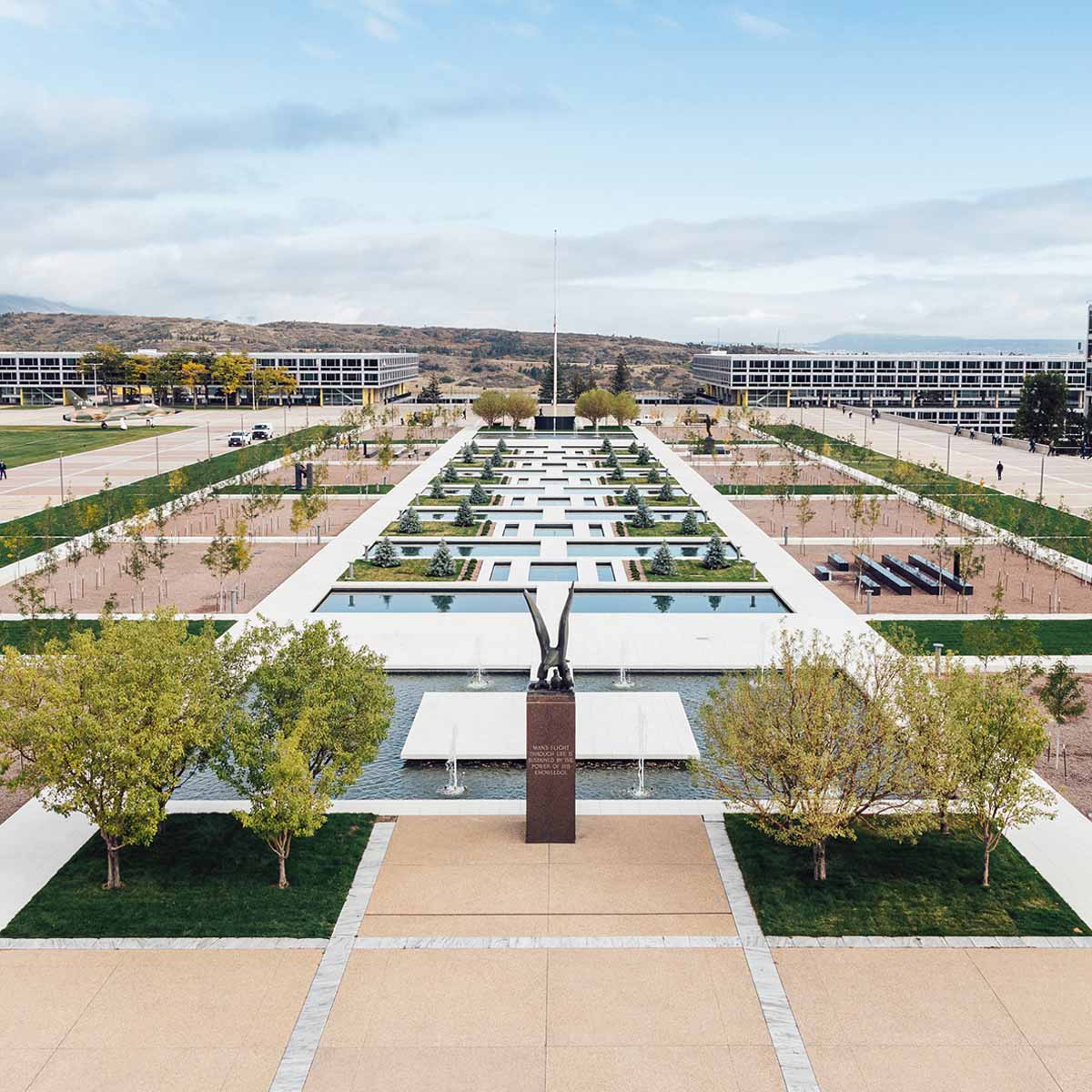
Roberto Burle Marx – Brazilian landscape architect and artist celebrated for his vibrant and dynamic designs. He regarded texture as a crucial element in his work, often using it to evoke a sense of movement and energy. Burle Marx’s landscapes incorporated a diverse range of plant species with varying leaf textures, creating a tapestry of tactile sensations. Notable projects where texture played a key role include the Flamengo Park in Rio de Janeiro, Brazil, where he utilized lush foliage and textural contrasts, and the Ministry of Education and Health gardens in Rio de Janeiro, where he integrated various textures through plants and hardscape materials.

Robert Irwin – American installation artist whose landscape projects have exploited the use of texture in conjunction with line, colour and light. His landscape designs accentuate the interplay of texture, colour, light and reflection, whilst understanding the natural development of the planting scheme. As he said, gardens are “always changing, never twice the same”. Notable working include the Central Garden of the Getty Center Los Angeles and Los Angeles County Museum of Art’s Palm Garden.
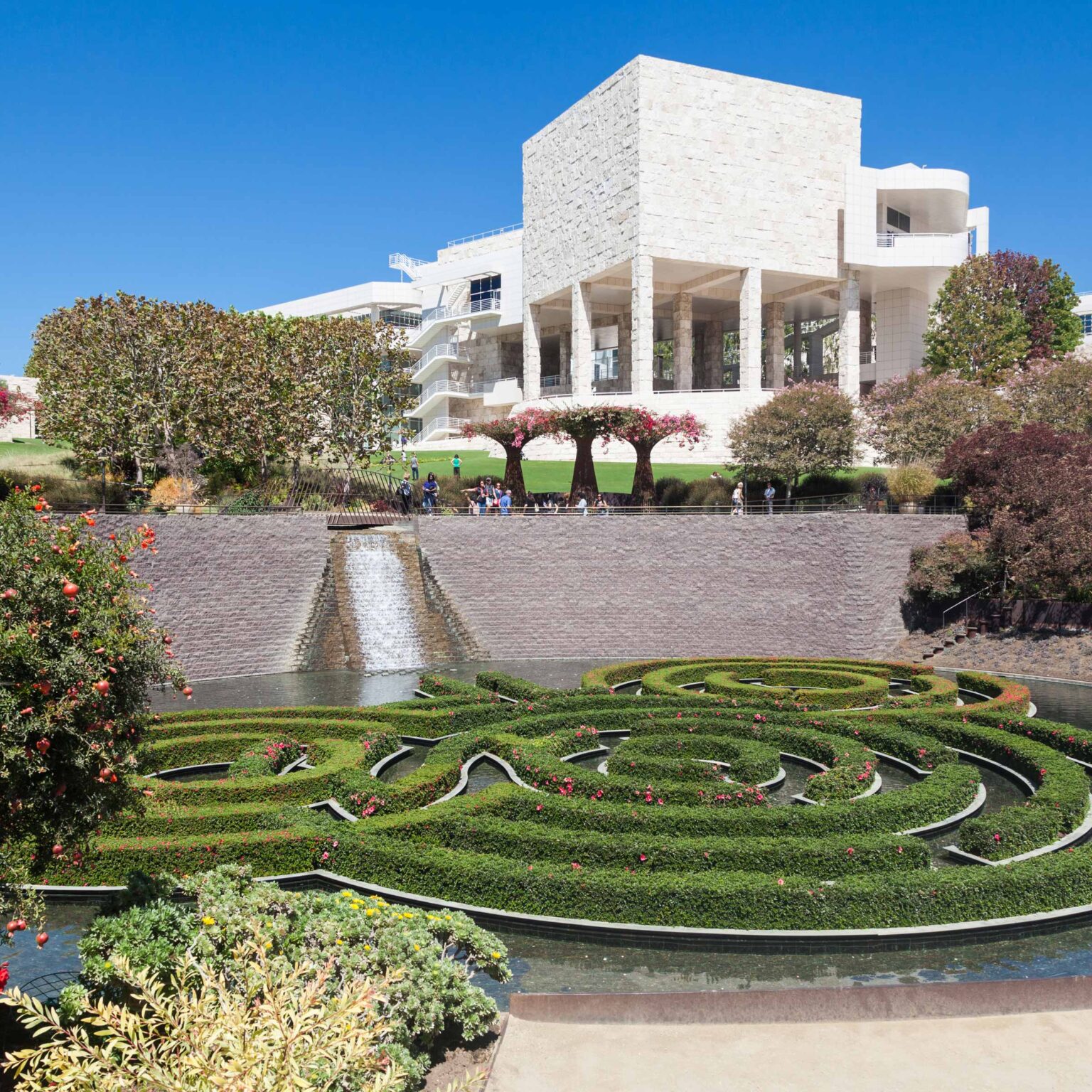
Sarah Price – British garden designer, is renowned for her ability to create textured landscapes that evoke a sense of wild beauty. Her designs often feature a naturalistic planting style with an emphasis on texture and movement. Notable projects include the gardens at the Musée du Quai Branly in Paris, where her skillful use of texture created a mesmerizing sensory experience, and the Olympic Park in London, where she collaborated with James Hitchmough to create a tapestry of colourful and textural plantings. Price’s mastery of texture has earned her numerous accolades in the world of garden design.
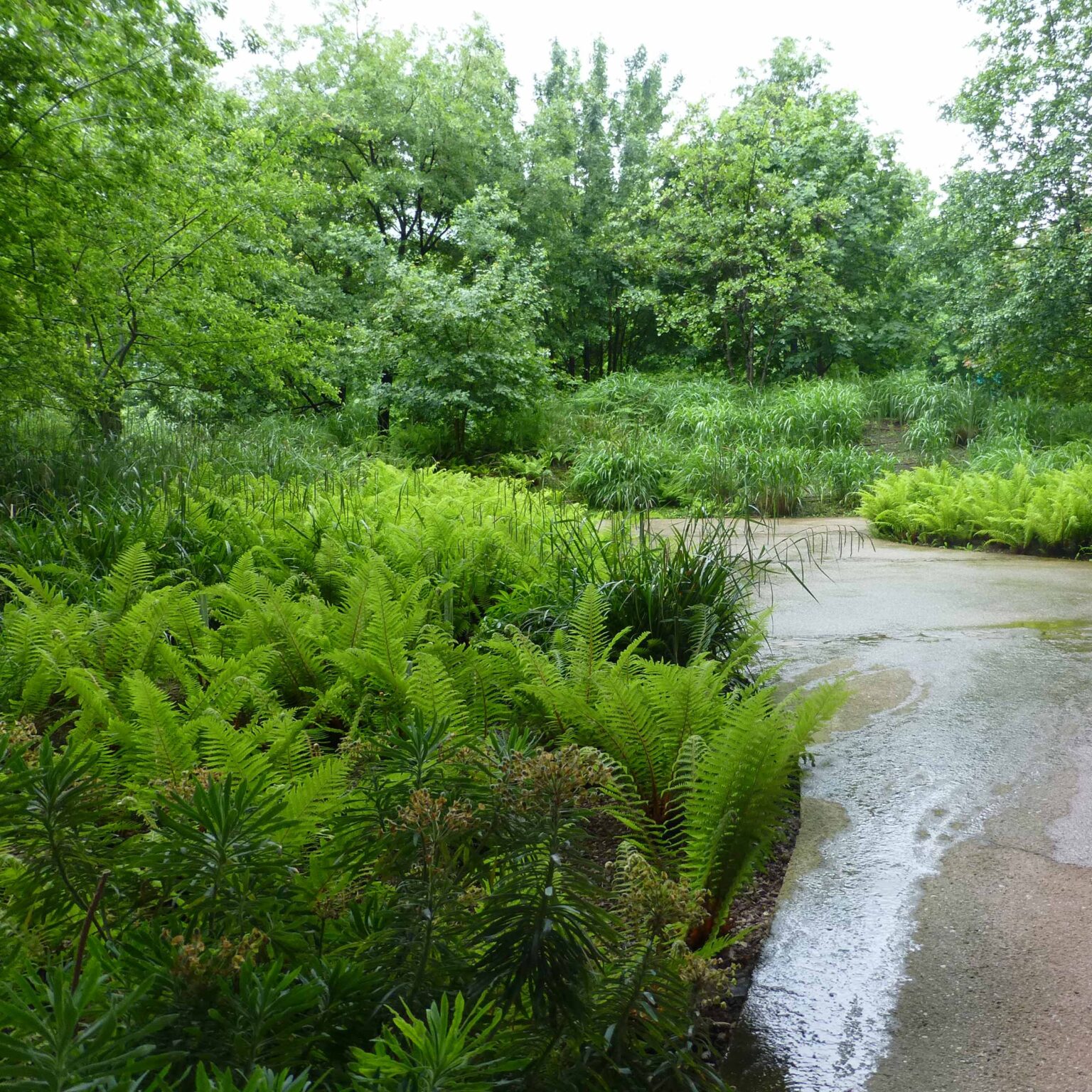
Christopher Bradley-Hole – British landscape architect and garden designer, is revered for his minimalist approach to texture in his designs. His creations often feature clean lines and carefully selected plantings that highlight textural contrast. Notable projects include the B&Q Sentebale Garden at the Chelsea Flower Show, where his use of textured grasses and sculptural plantings created a serene and contemplative space, and the Alnwick Garden in Northumberland, which showcases his ability to create dramatic textural compositions. Bradley-Hole’s minimalist aesthetic and his skilful use of texture have made him a prominent figure in contemporary garden design.
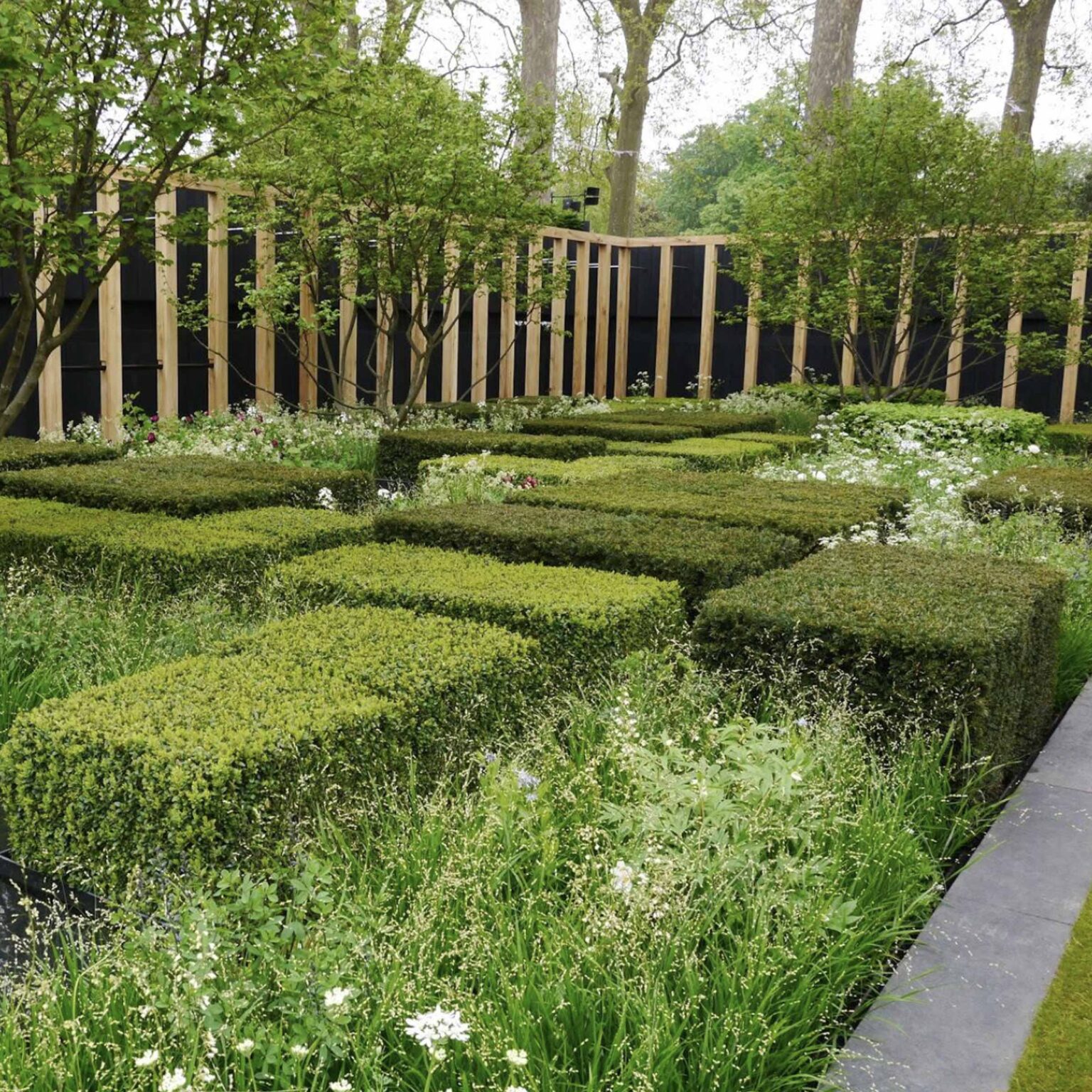
Artistic Sculptural Elements
Incorporating artistic sculptures or installations in modern gardens has become increasingly popular. These pieces serve as focal points or add artistic flair to the outdoor space, blurring the boundaries between nature and man-made creations. Influenced by modern art movements of the 20th century, such as the works of Constantin Brâncuși or Henry Moore, sculptures in gardens create a dialogue between natural elements and artistic expression.
Sculptural Elements: Influential Designers
Charles Jencks – American-born British landscape architect, architectural theorist, and writer. He was known for his work in the field of landscape design and his incorporation of artistic sculptural elements into his projects. Jencks often integrated landforms, earthworks, and sculptural installations to create visually stimulating and intellectually engaging outdoor spaces. Notable examples of his work where artistic sculptural elements are used include the Garden of Cosmic Speculation in Dumfries, Scotland, which features sculptural landforms inspired by scientific and cosmological concepts, and the Cells of Life garden at Jupiter Artland in Edinburgh, Scotland, which incorporates sculptural elements into a botanical garden setting.
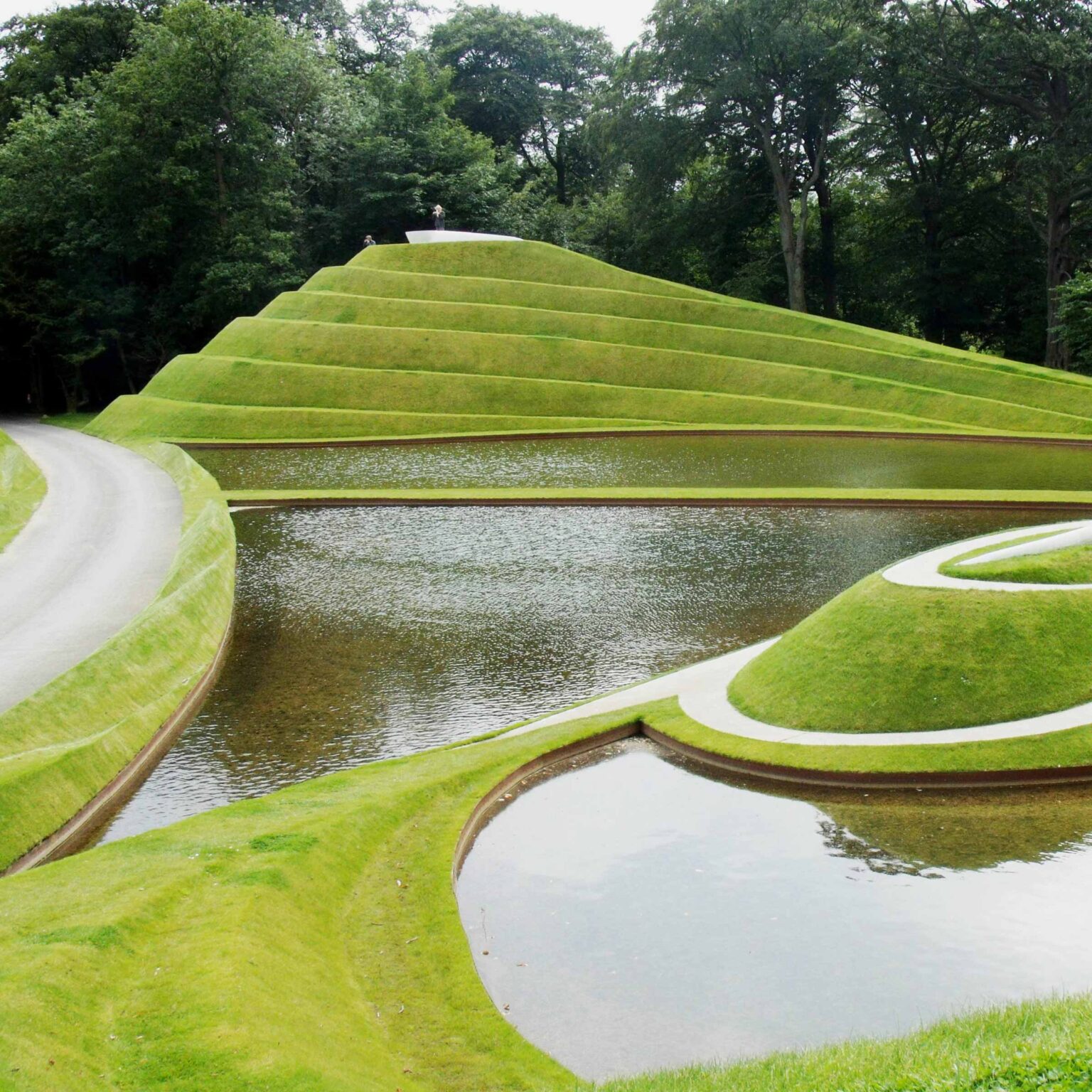
Anish Kapoor – British sculptor known for his large-scale public sculptures and installations. While not primarily a landscaper, his collaborations with landscape architects have resulted in projects where his sculptural elements are integrated into garden settings. Kapoor’s works often play with scale, form, and materiality, creating captivating and immersive experiences. Notable examples of his work where artistic sculptural elements are used include the Sky Mirror at the Rockefeller Center in New York City, which interacts with the urban environment, and the ArcelorMittal Orbit tower in the Queen Elizabeth Olympic Park in London, where Kapoor’s sculptural intervention adds a distinctive artistic element to the landscape.
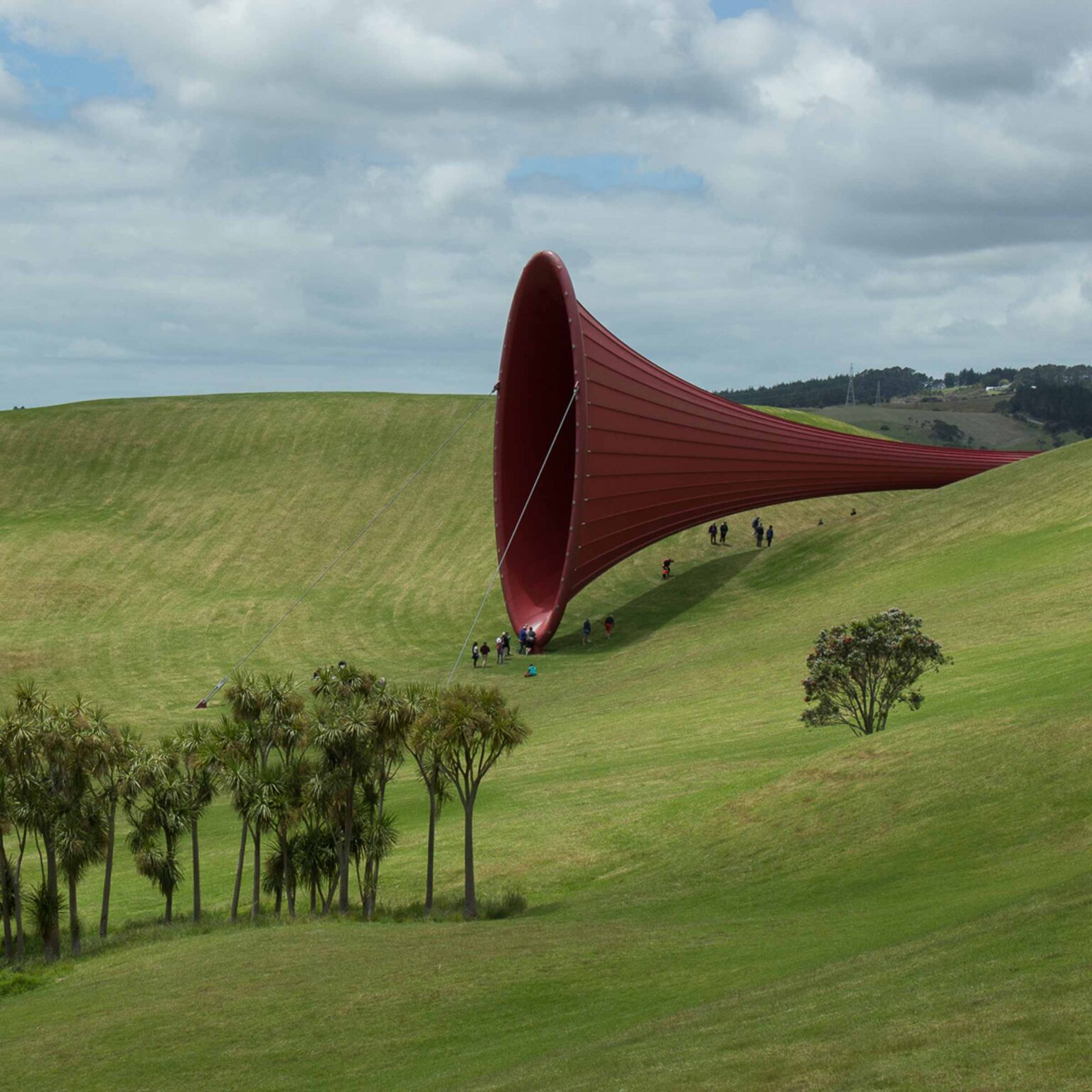
Peter Walker – American landscape architect known for his influential work in landscape architecture and urban design. While primarily recognized for his expertise in designing large-scale public spaces, Walker has also incorporated artistic sculptural elements into his projects. His designs often feature sculptures that contribute to the overall aesthetic and experiential qualities of the landscape. Notable examples of his work where artistic sculptural elements are used include the National September 11 Memorial in New York City, where sculptural elements are integrated with water features to create a powerful commemorative space, and the Nasher Sculpture Center garden in Dallas, Texas, where sculptures are strategically placed within the garden design.
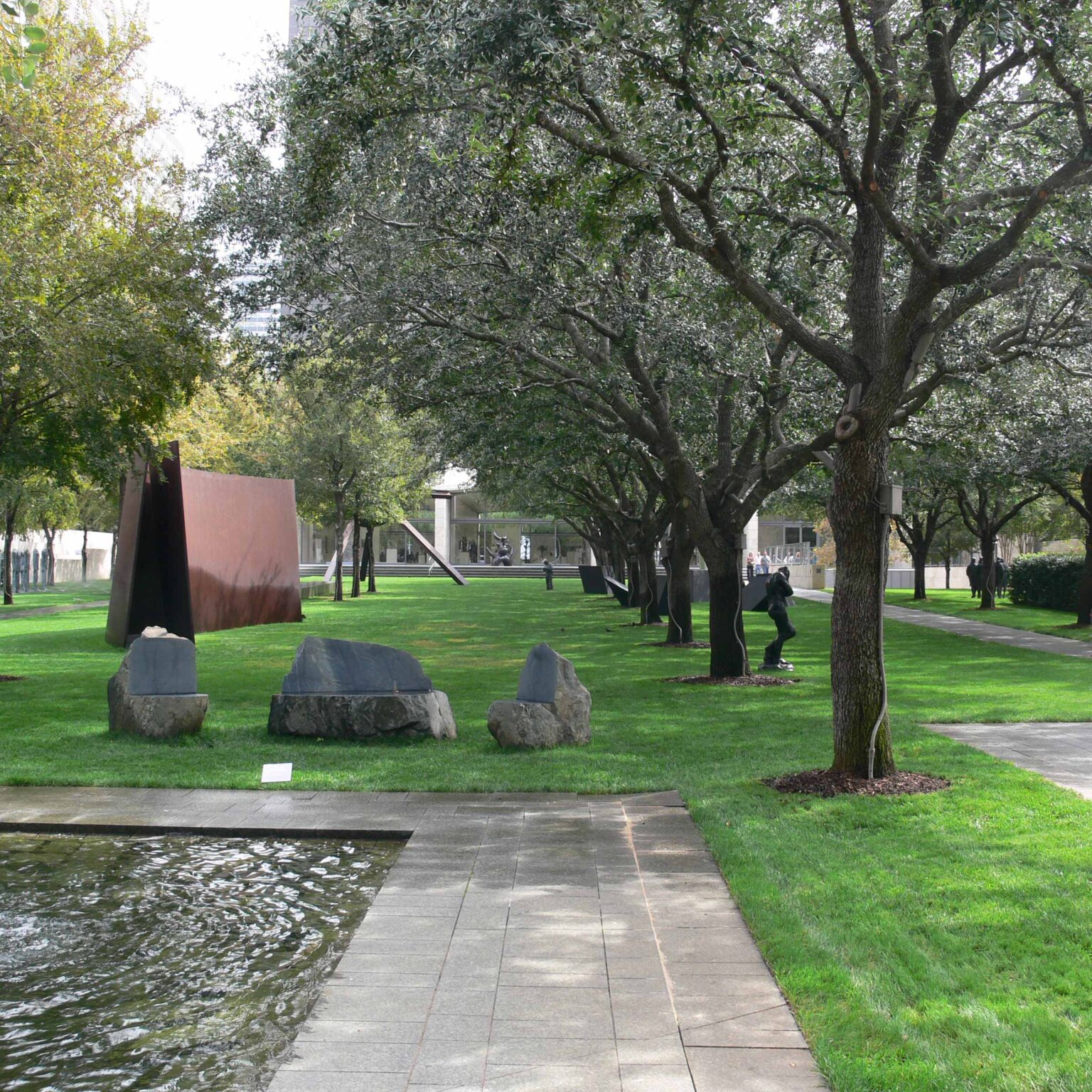
Shunmyo Masuno – Japanese Zen Buddhist priest and garden designer known for his minimalist approach to garden design. He integrated artistic sculptural elements into his designs to create serene and contemplative spaces. Masuno’s works often feature stone sculptures and arrangements that symbolize Zen principles and harmonize with the natural surroundings. Notable examples of his work where artistic sculptural elements are used include the Kenrokuen Garden in Kanazawa, Japan, where stone lanterns and other sculptural elements are placed strategically, and the Tofuku-ji Temple in Kyoto, where stone sculptures contribute to the meditative atmosphere.
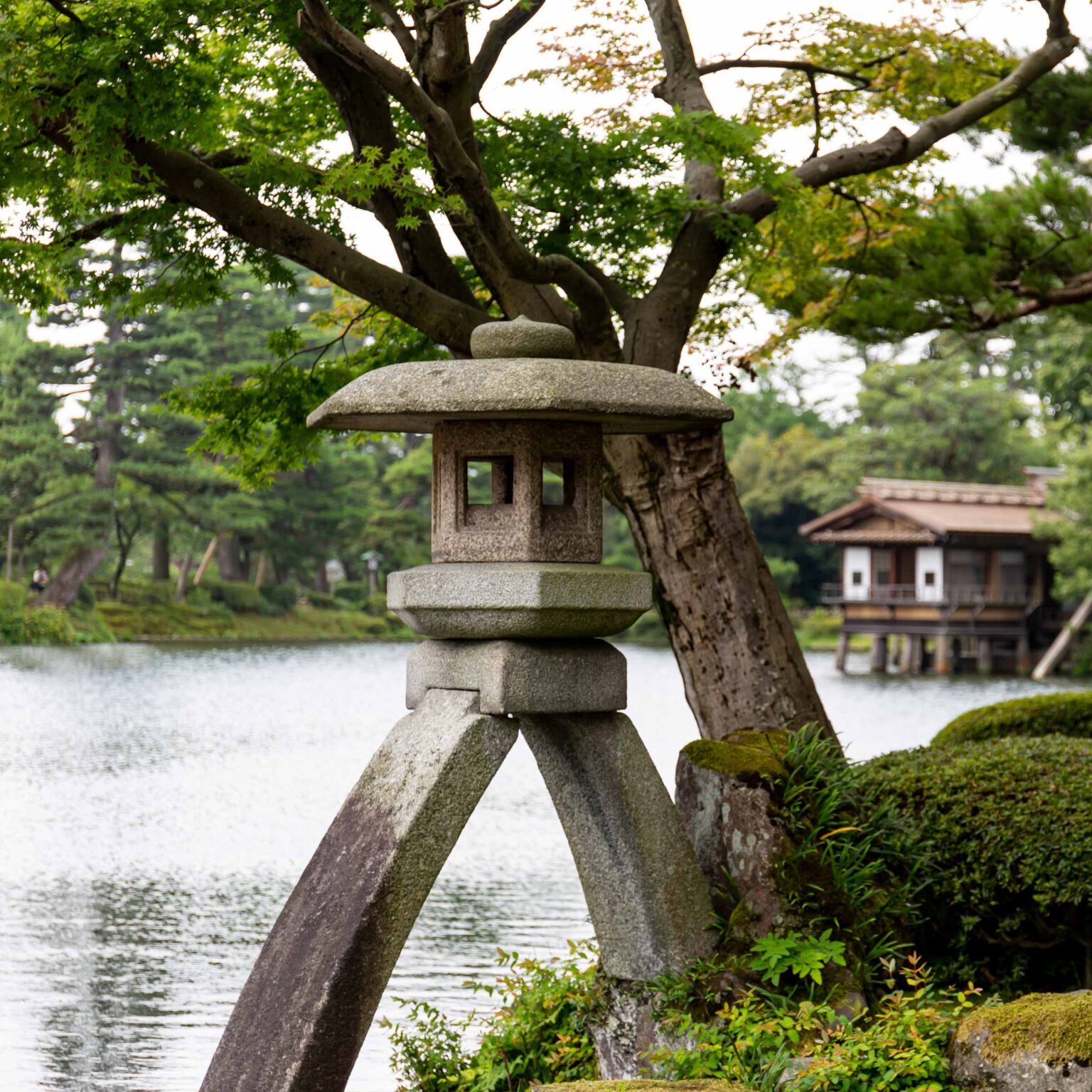
Conclusion
Modern garden design has had a profound impact on improving the quality of life for many people by incorporating sustainability, harmony, beauty, and relaxation.
It draws inspiration from historical movements, cultural influences, and design philosophies, while also incorporating contemporary ideas and technologies.
It embraces sustainable practices, such as water conservation and native plantings, to promote environmental responsibility. Modern garden design follows harmonious design principles, to create balanced and tranquil spaces that enhance mental well-being.
The aesthetic beauty of modern gardens, with their innovative use of materials and artistic elements, offers visual delight and inspiration. Additionally, these gardens provide a sanctuary for relaxation, offering a respite from the stresses of modern life.
Overall, modern garden design has elevated the experience of outdoor spaces, fostering a greater connection to nature and enhancing the overall quality of life.
By embracing minimalism, functionality, integration with architecture, sustainability, naturalistic planting, outdoor rooms, texture, and artistic sculptures, modern garden design has evolved into a diverse and vibrant style.




